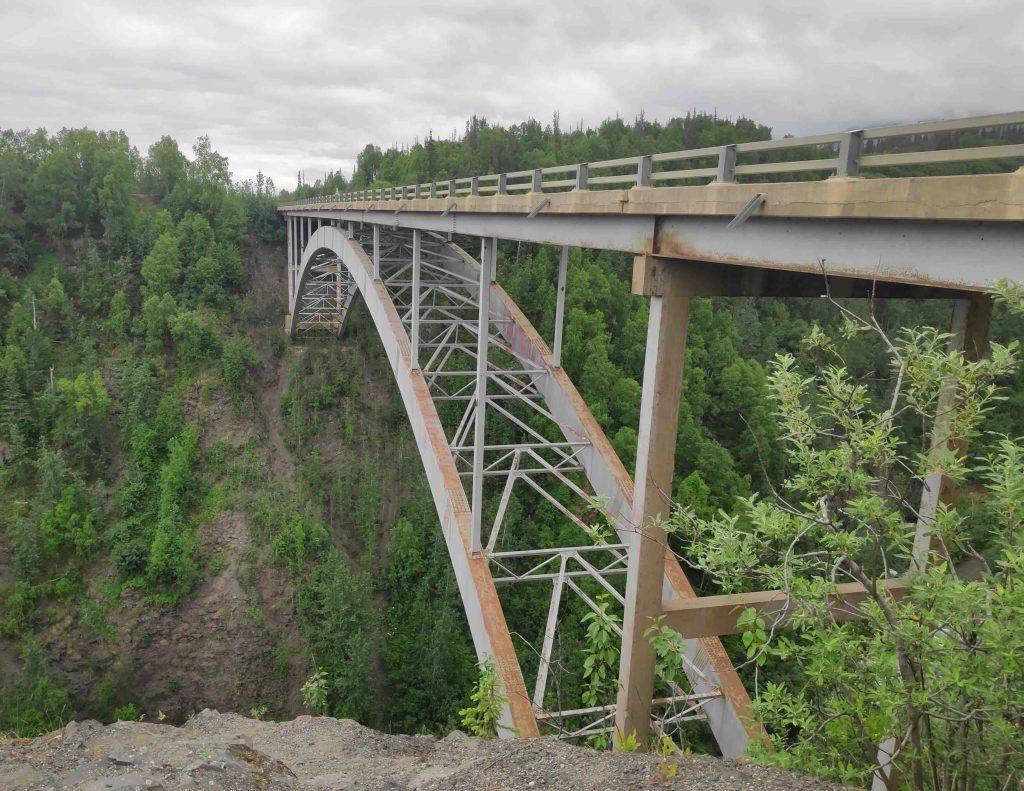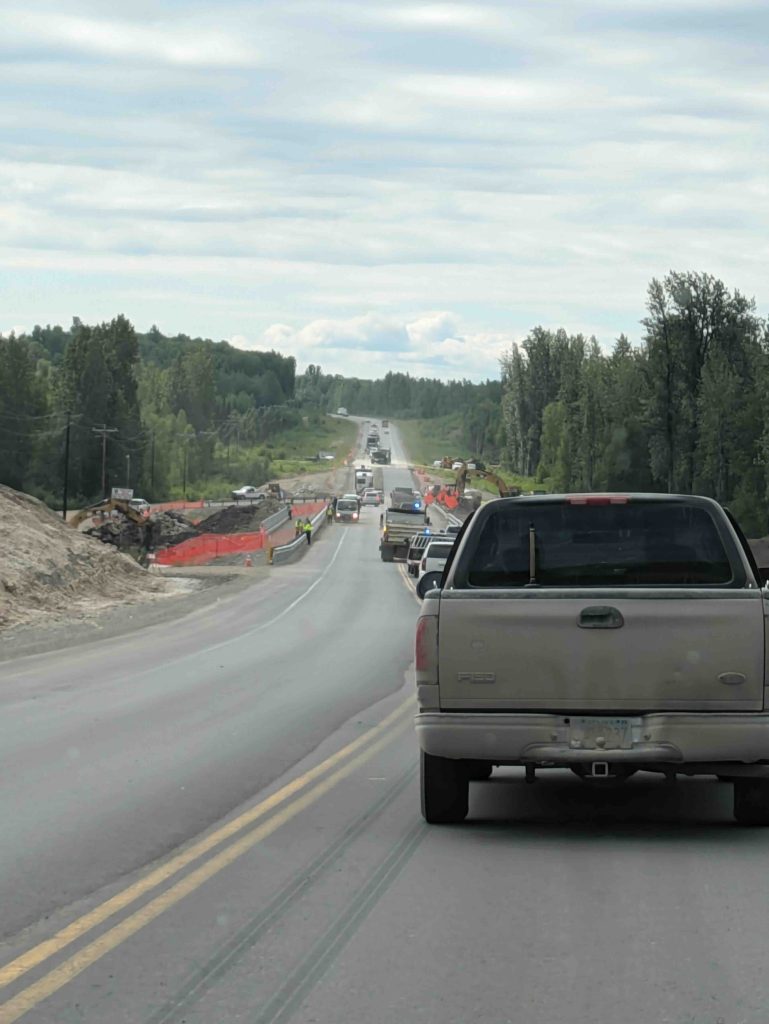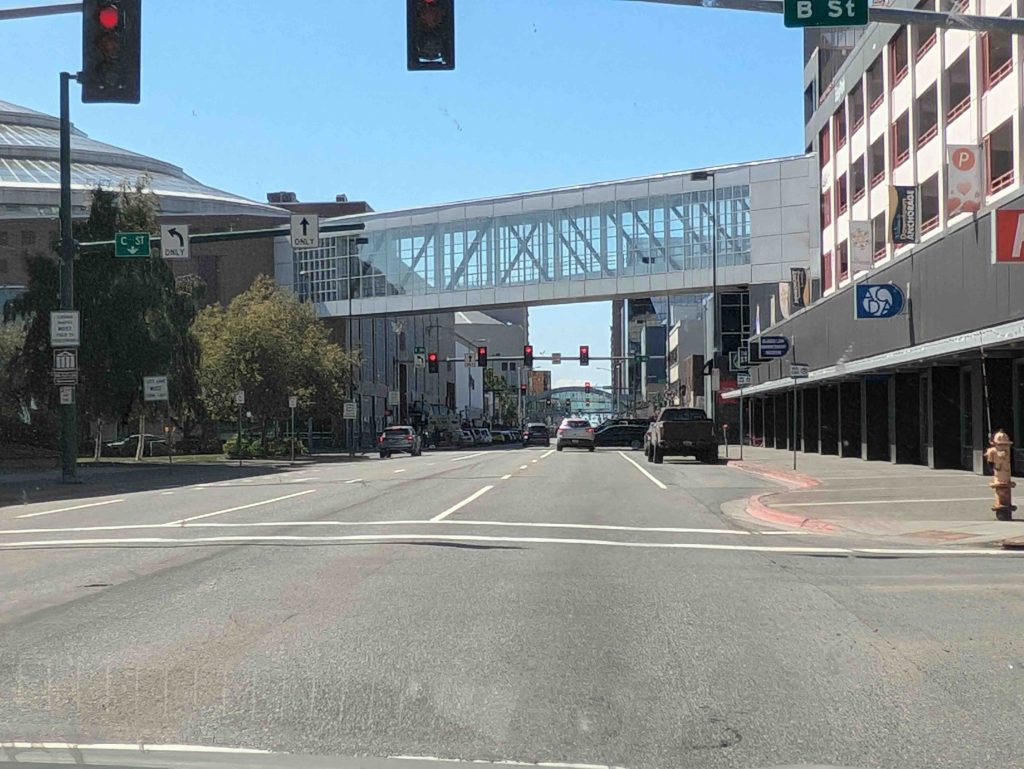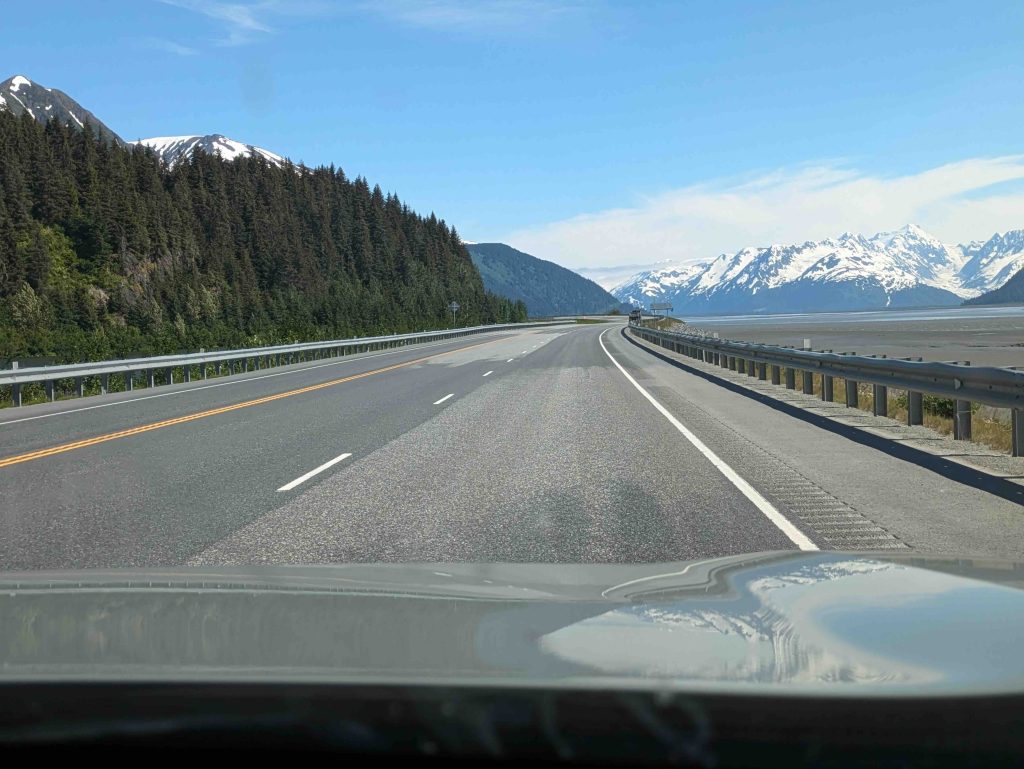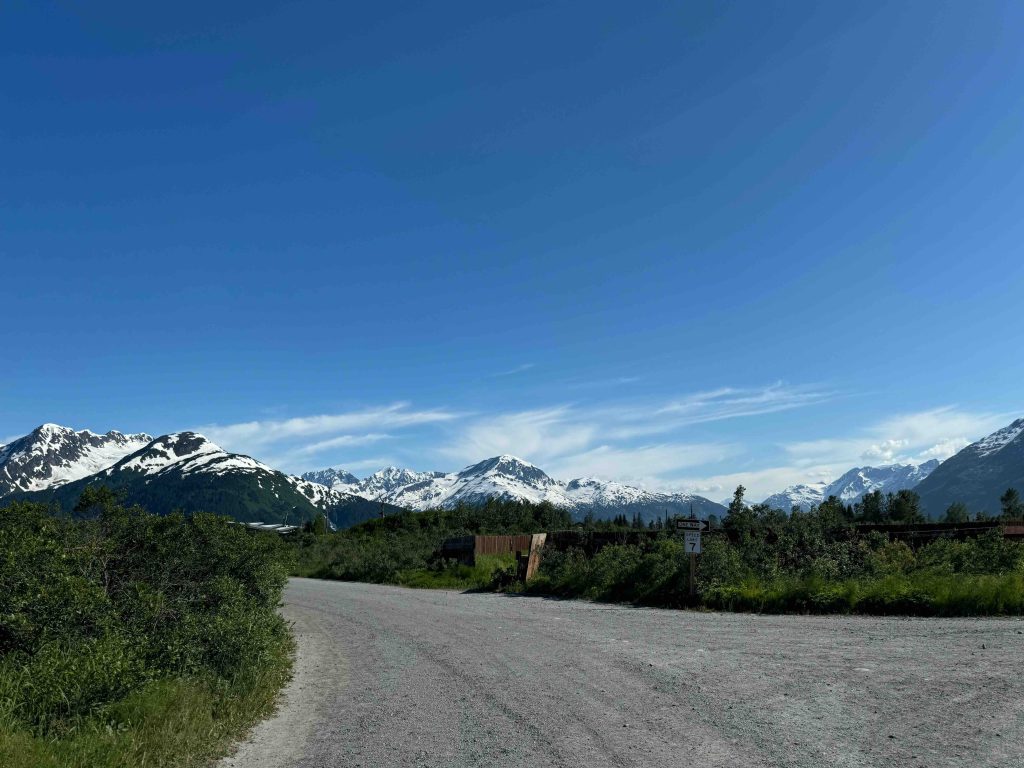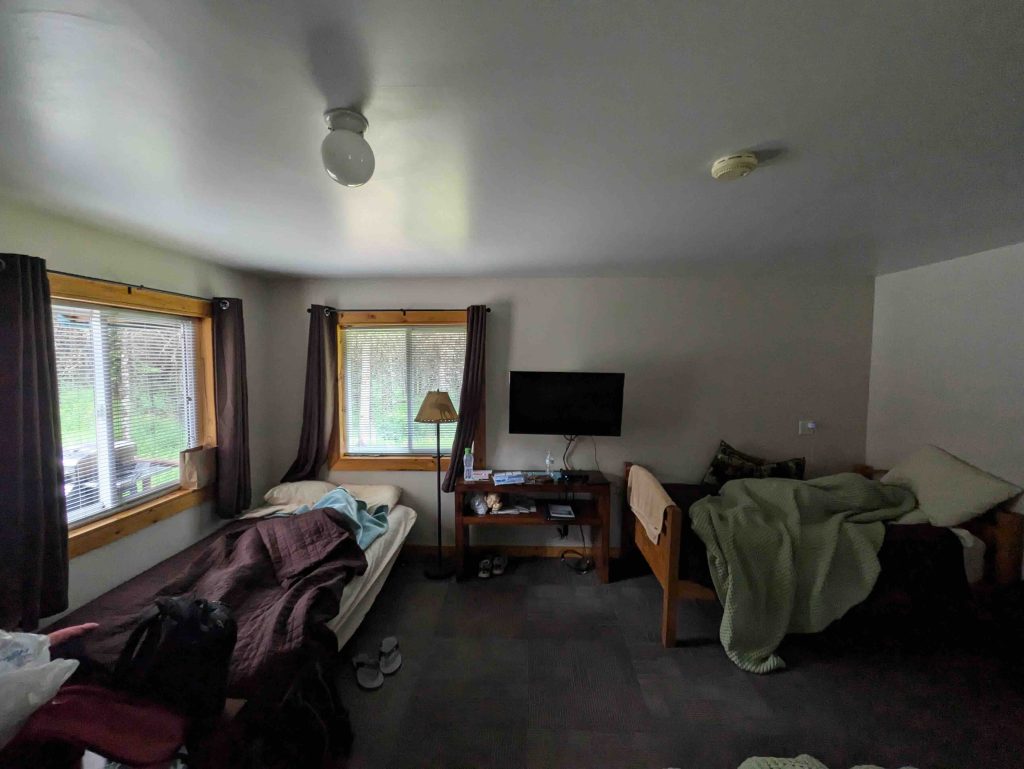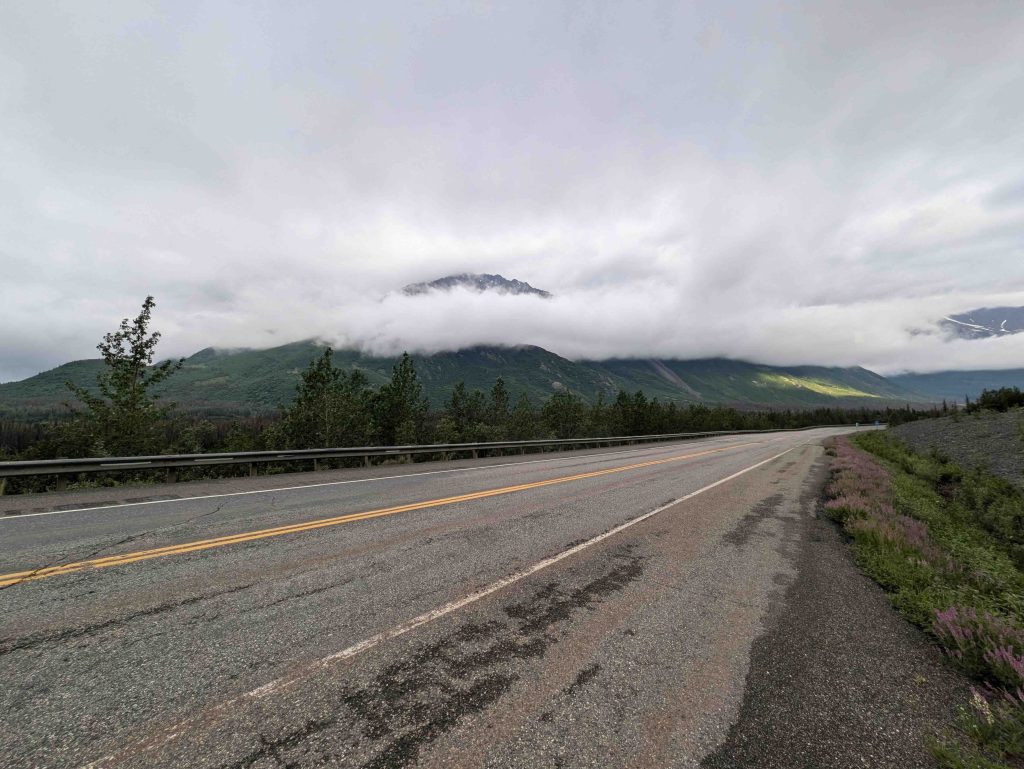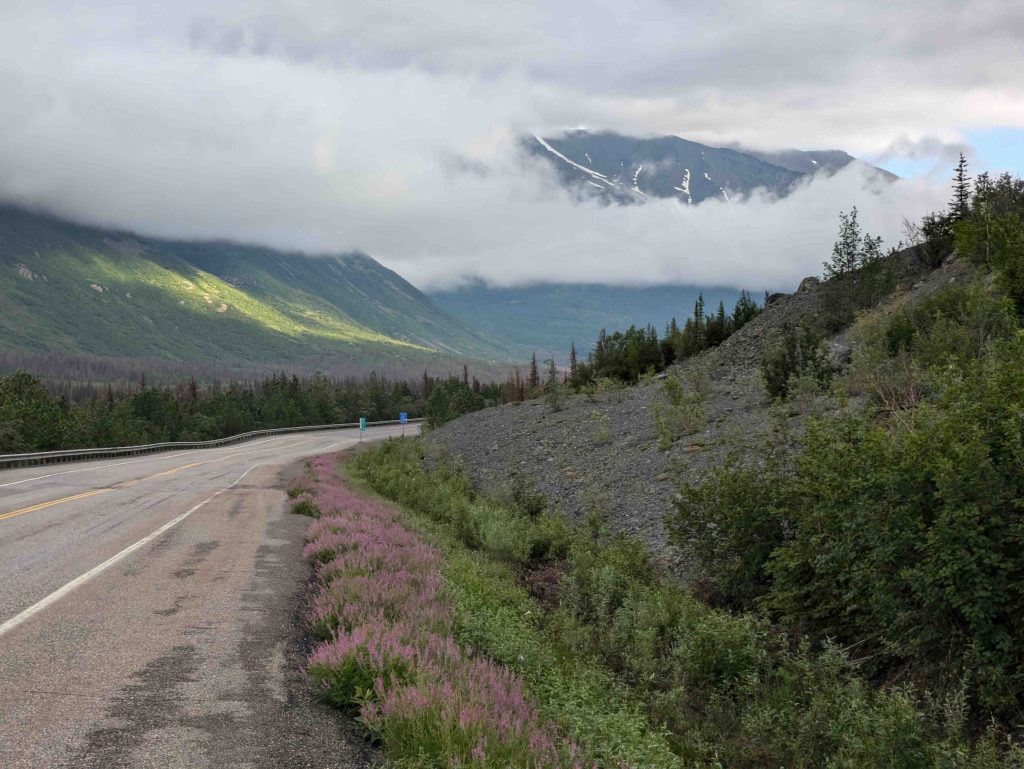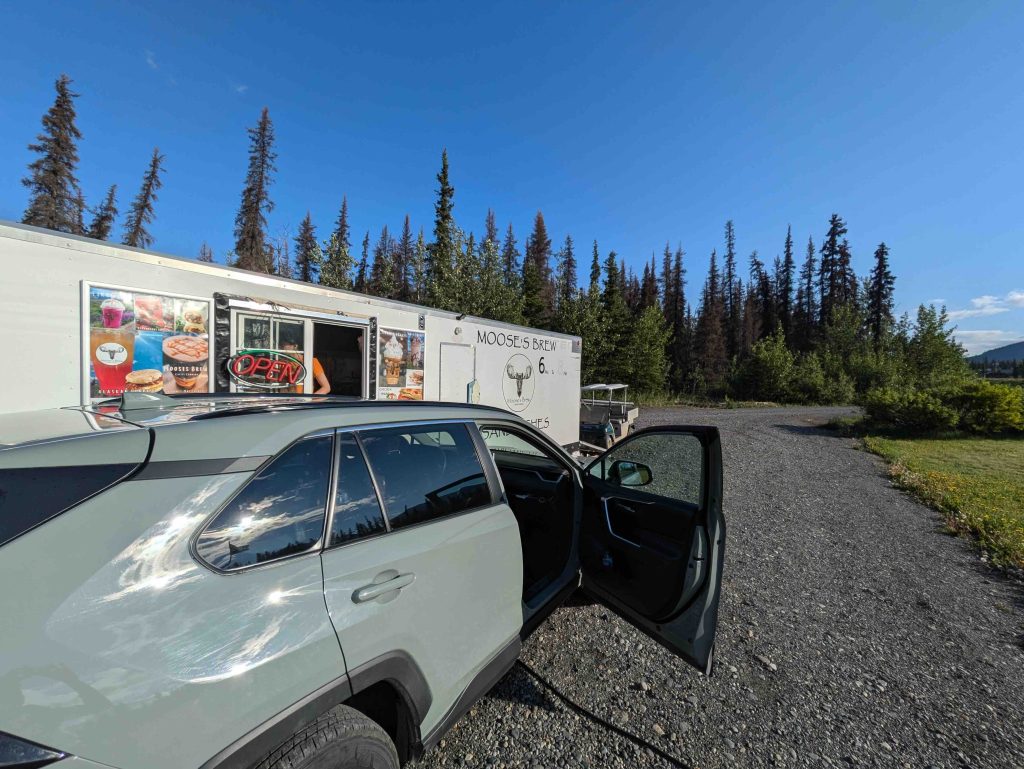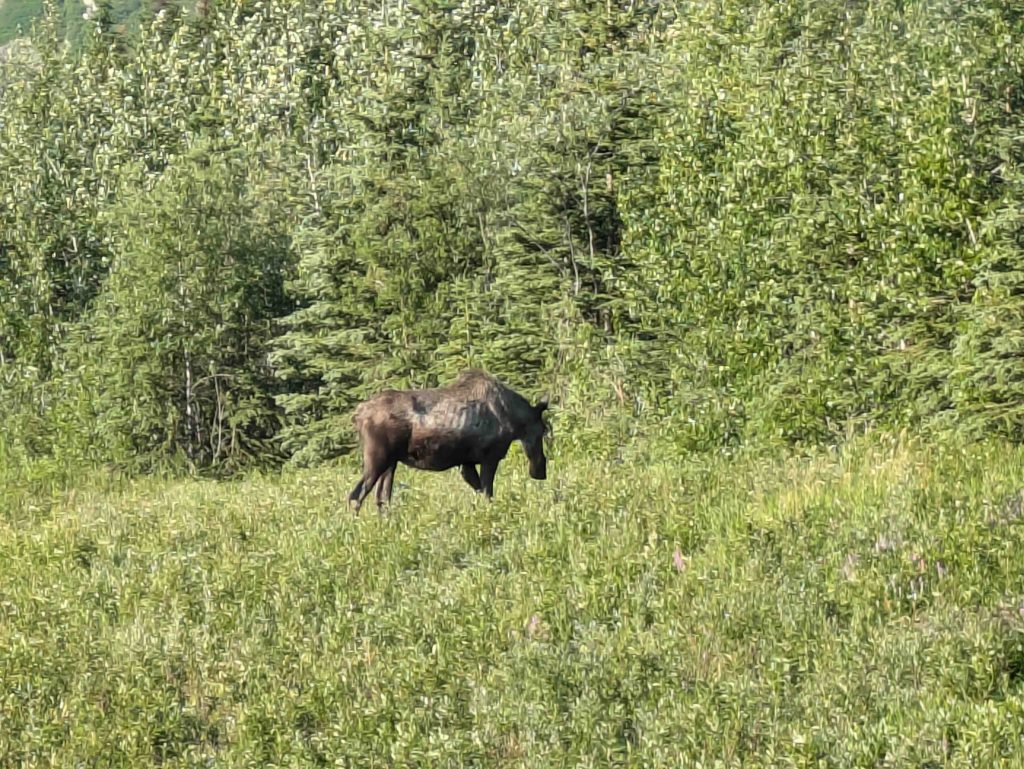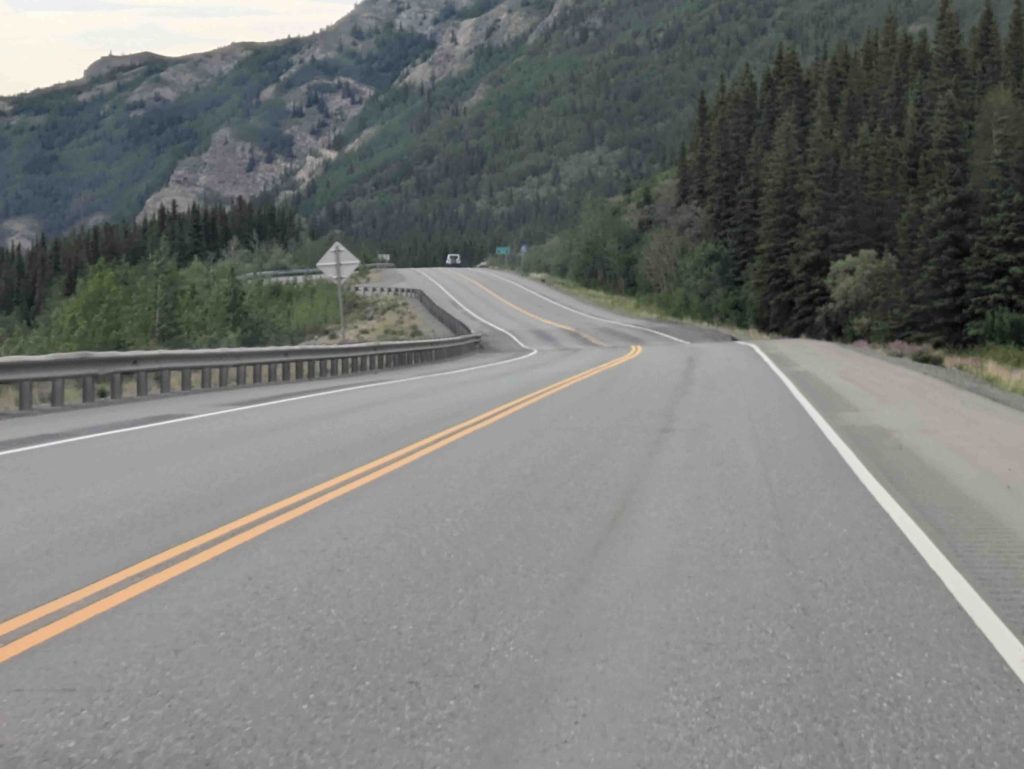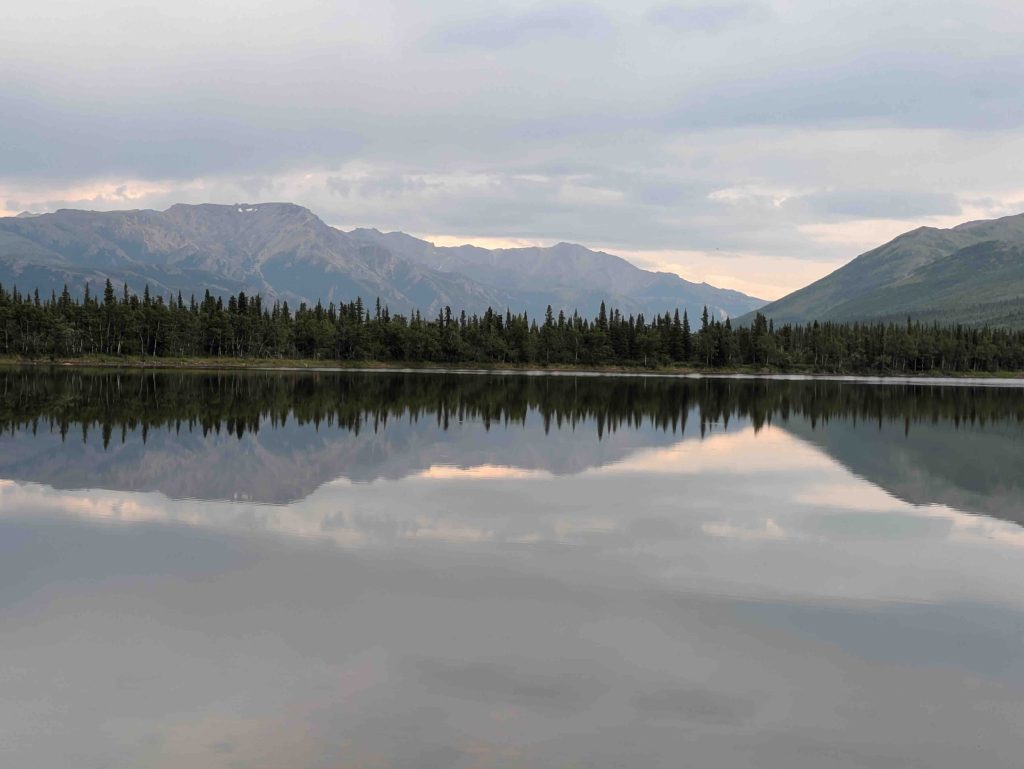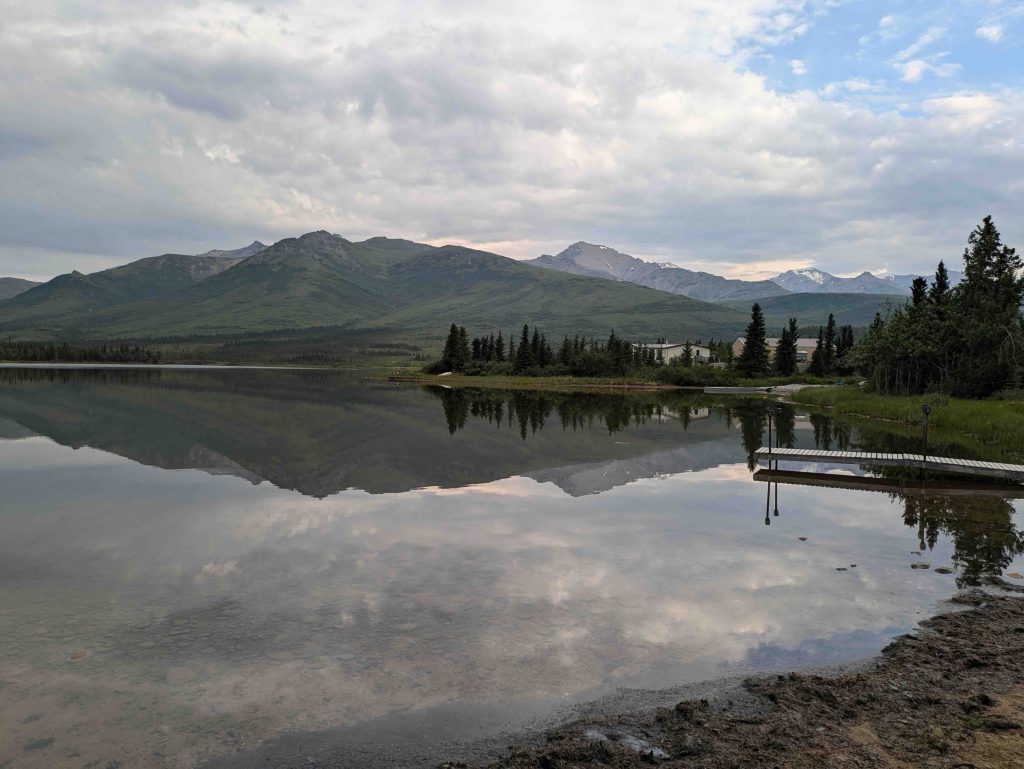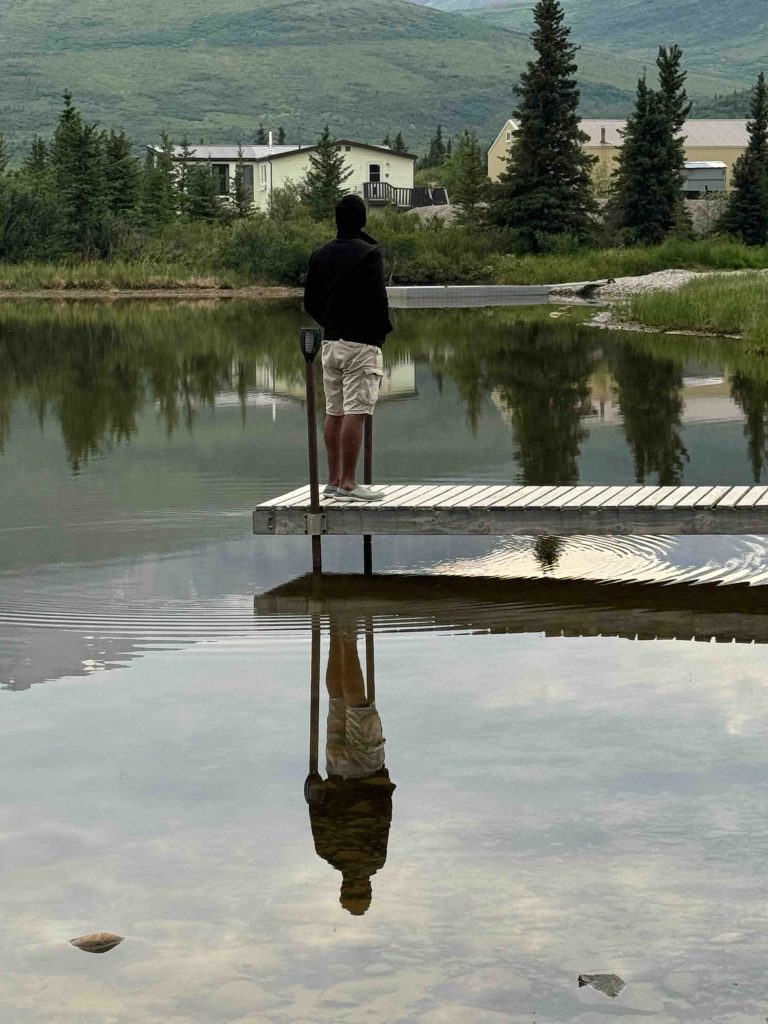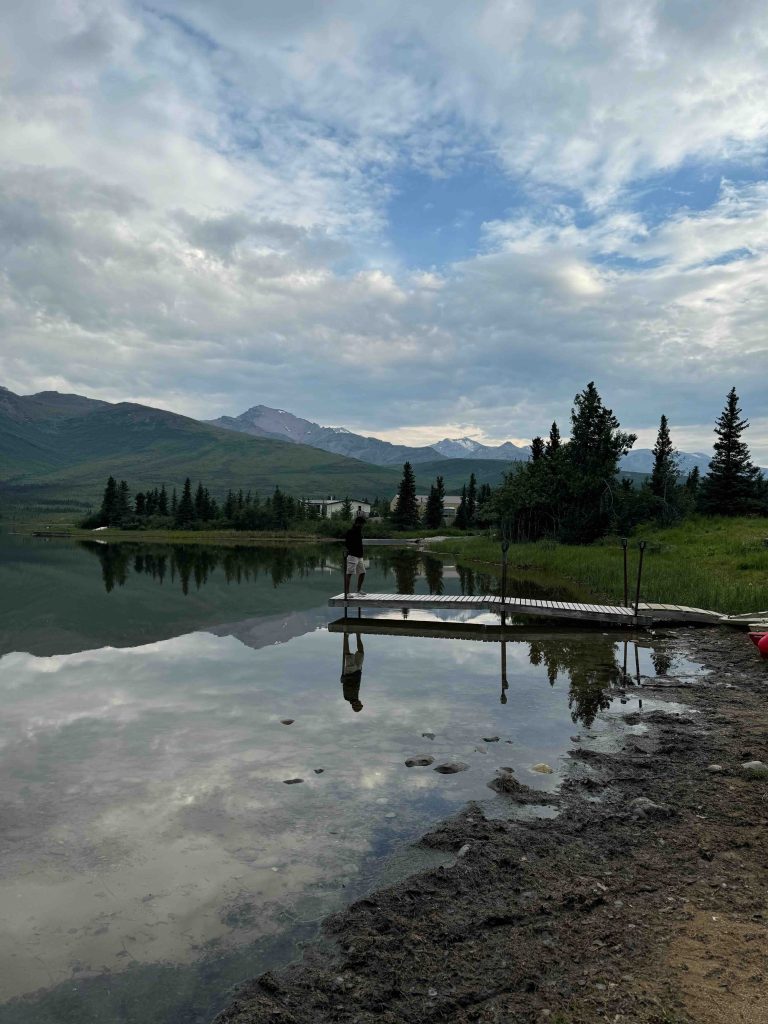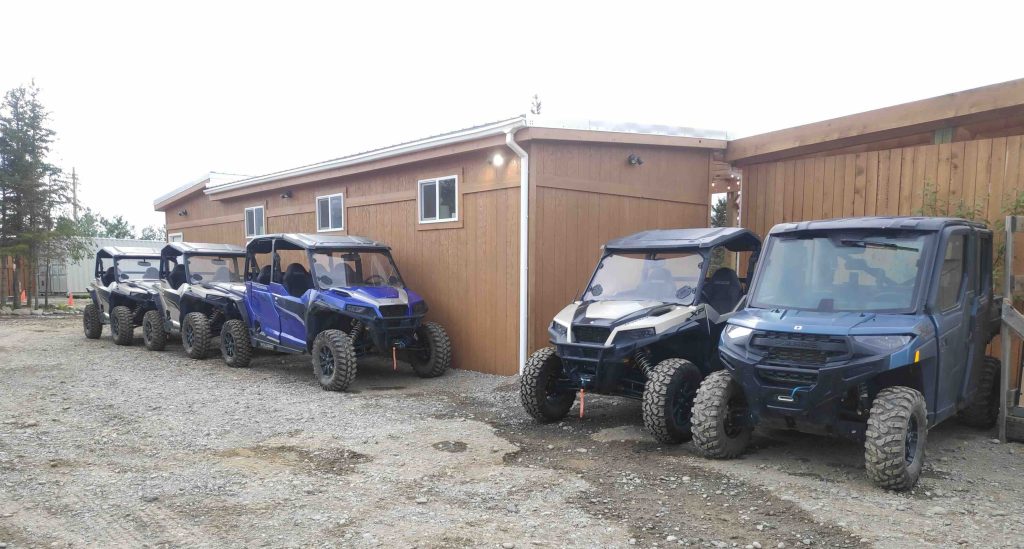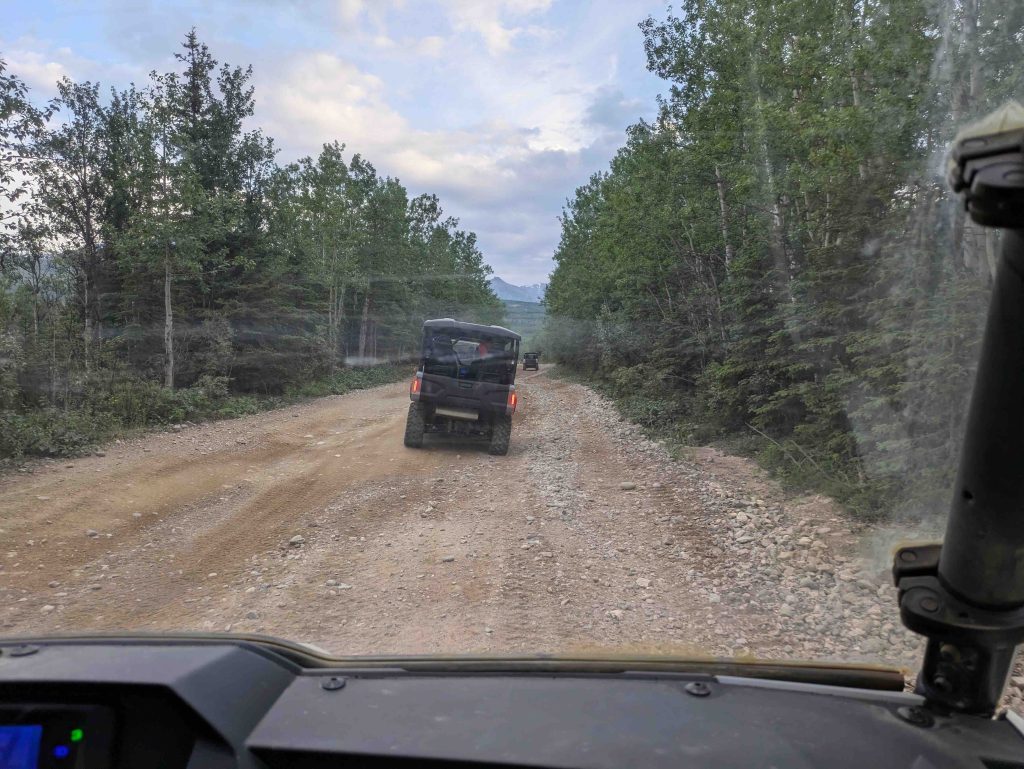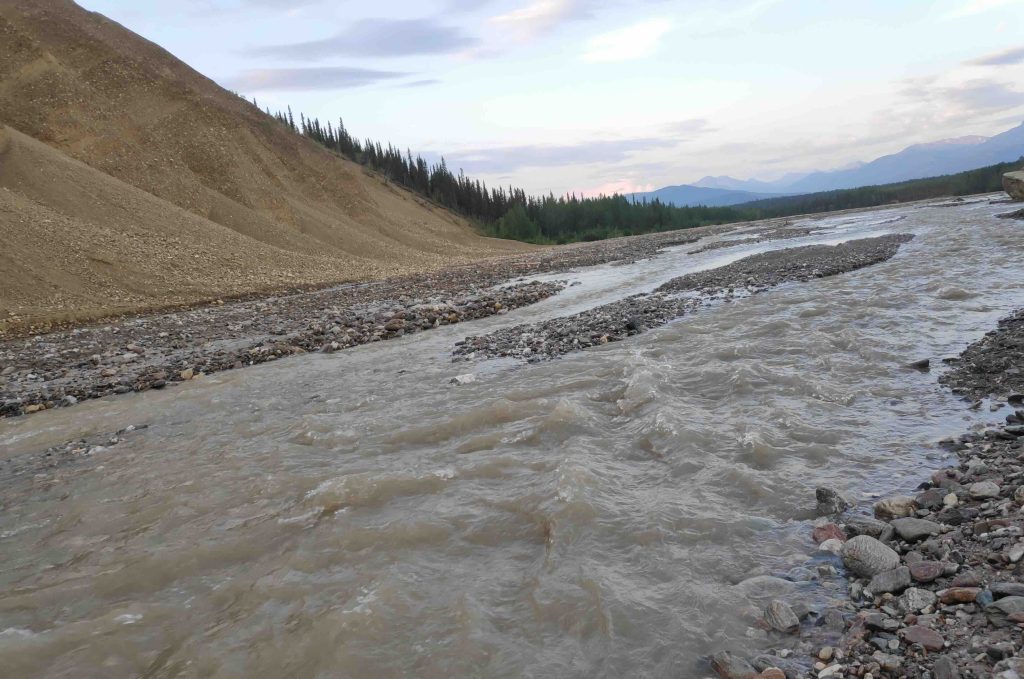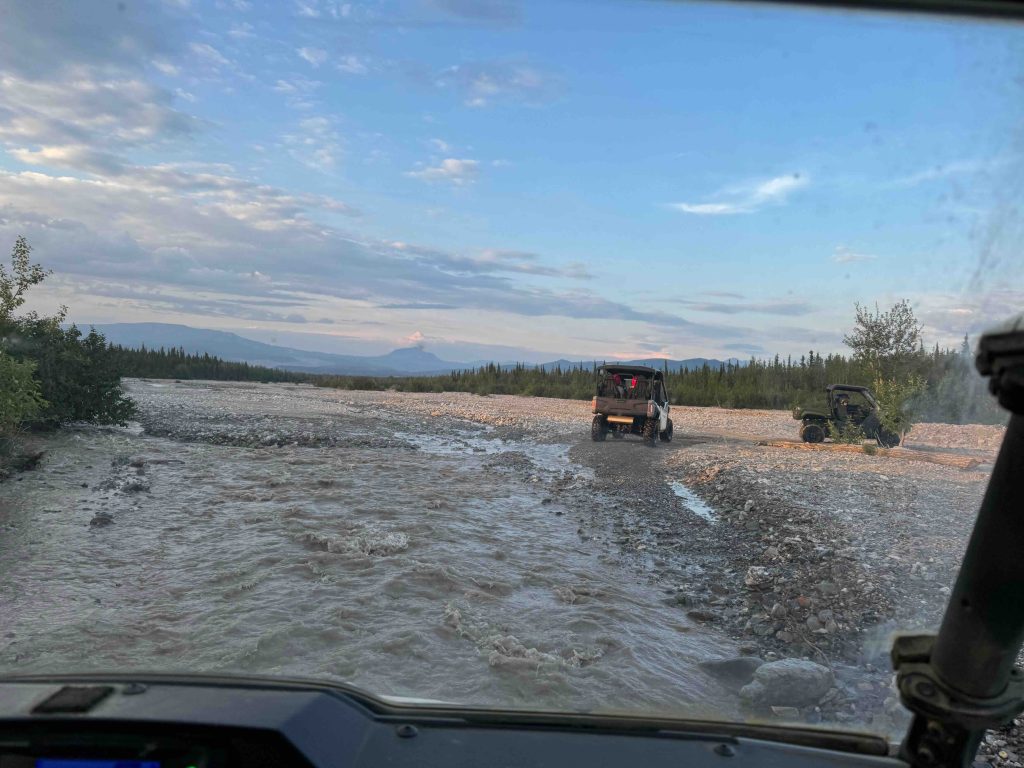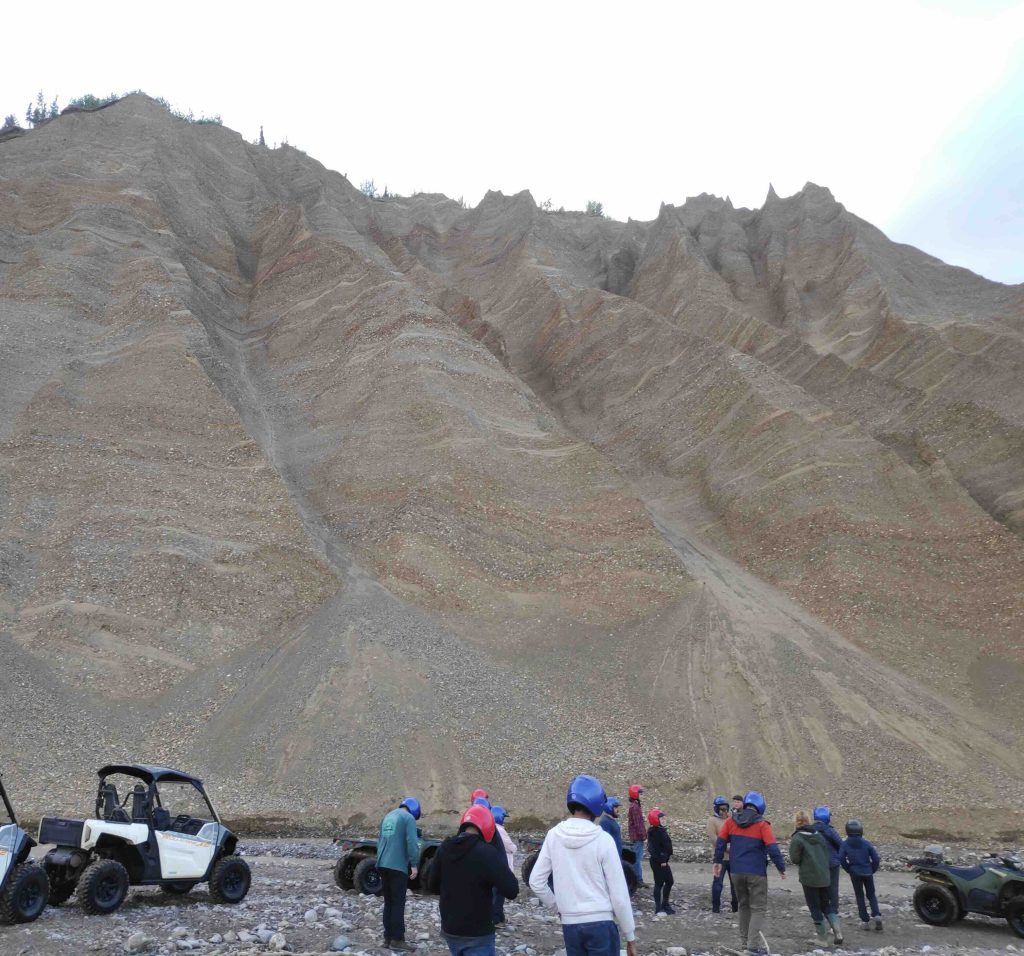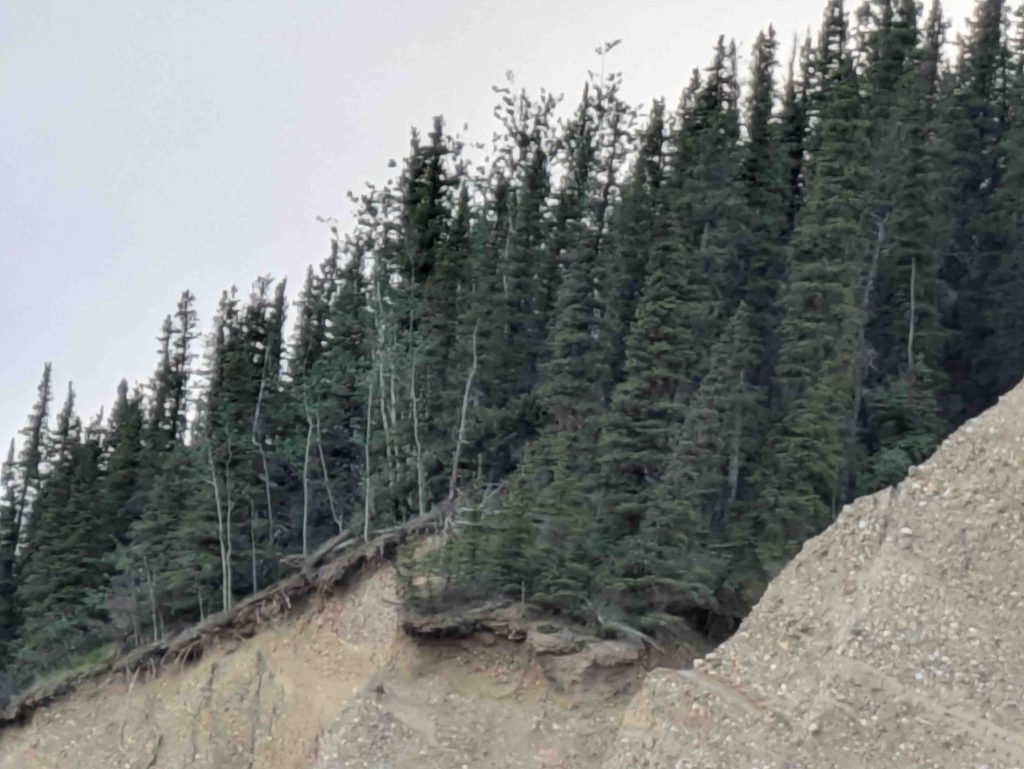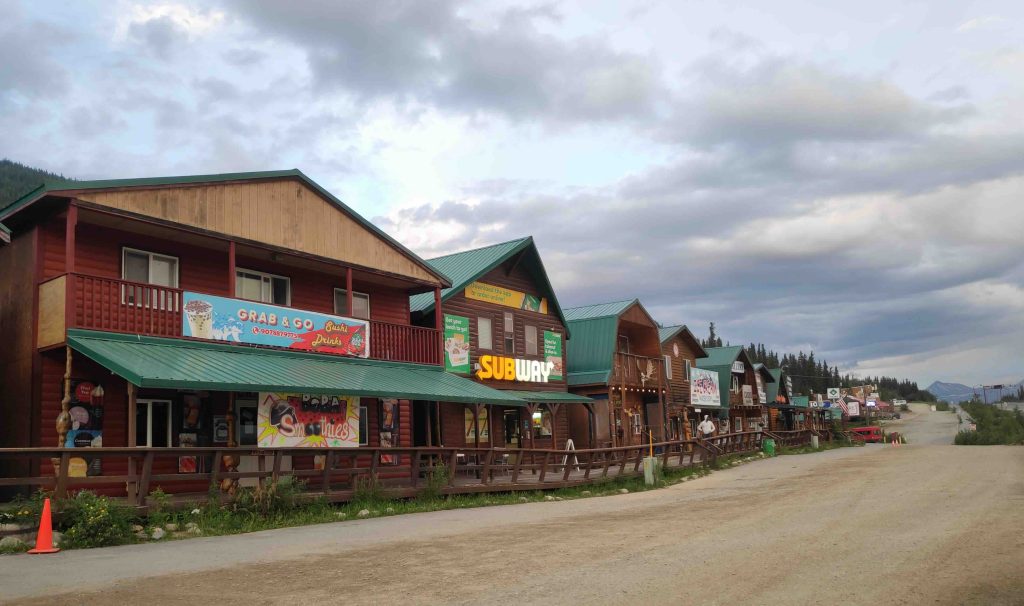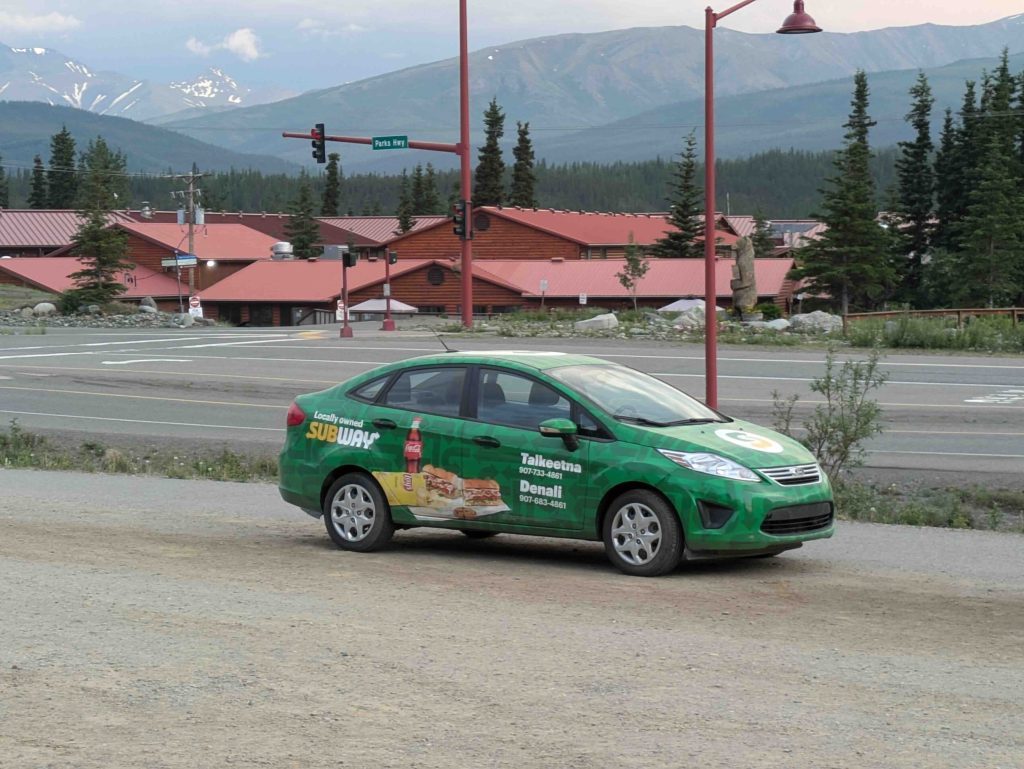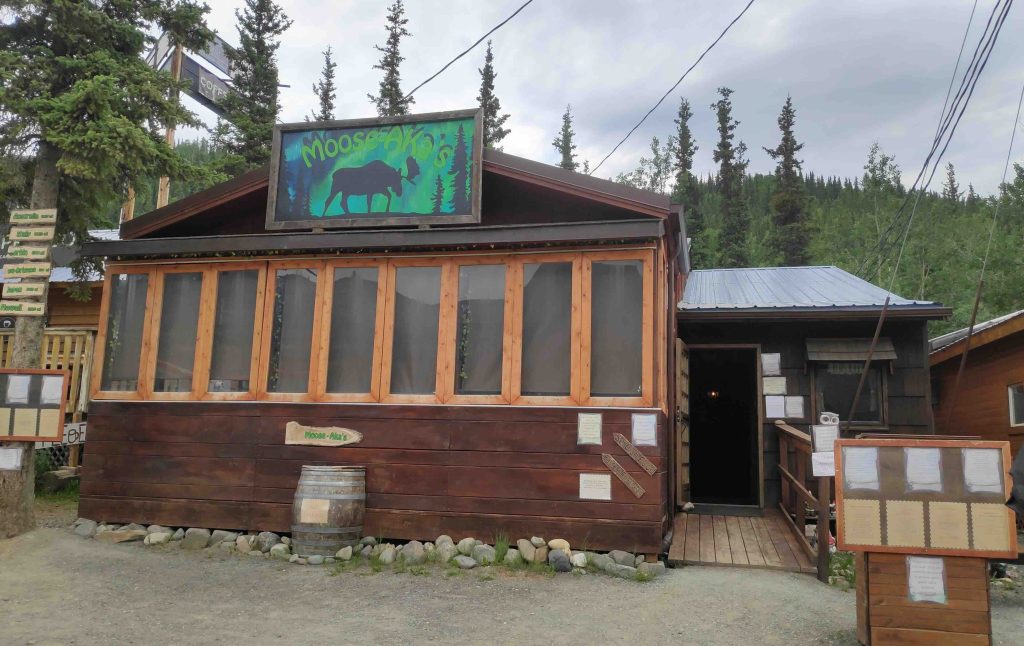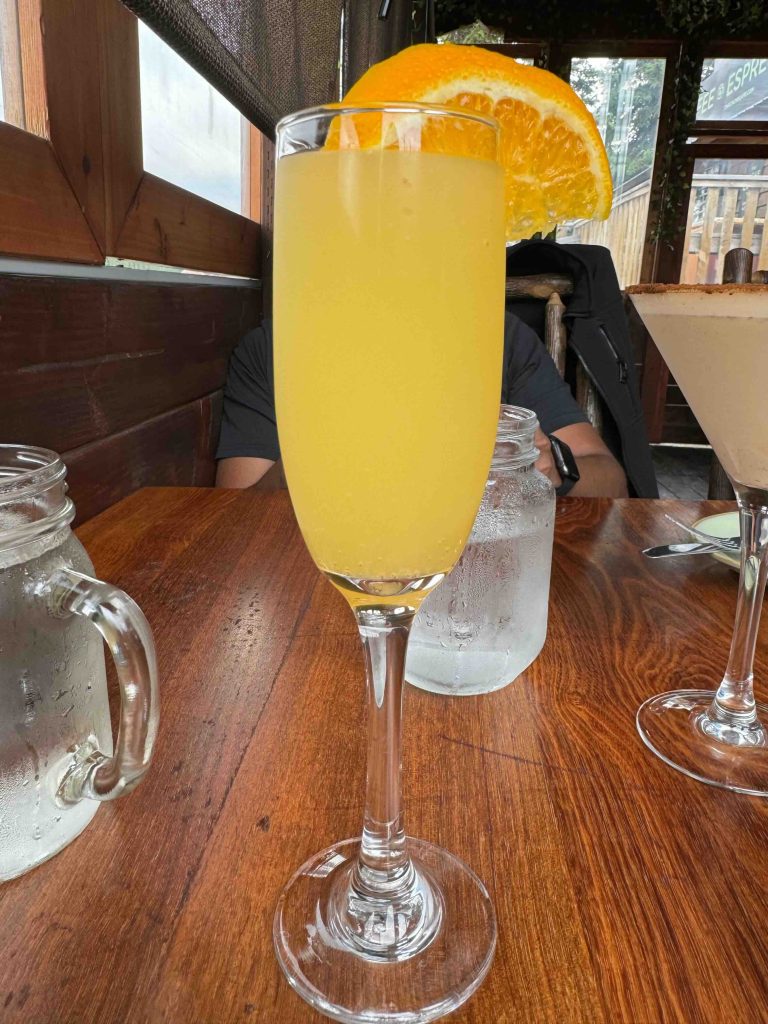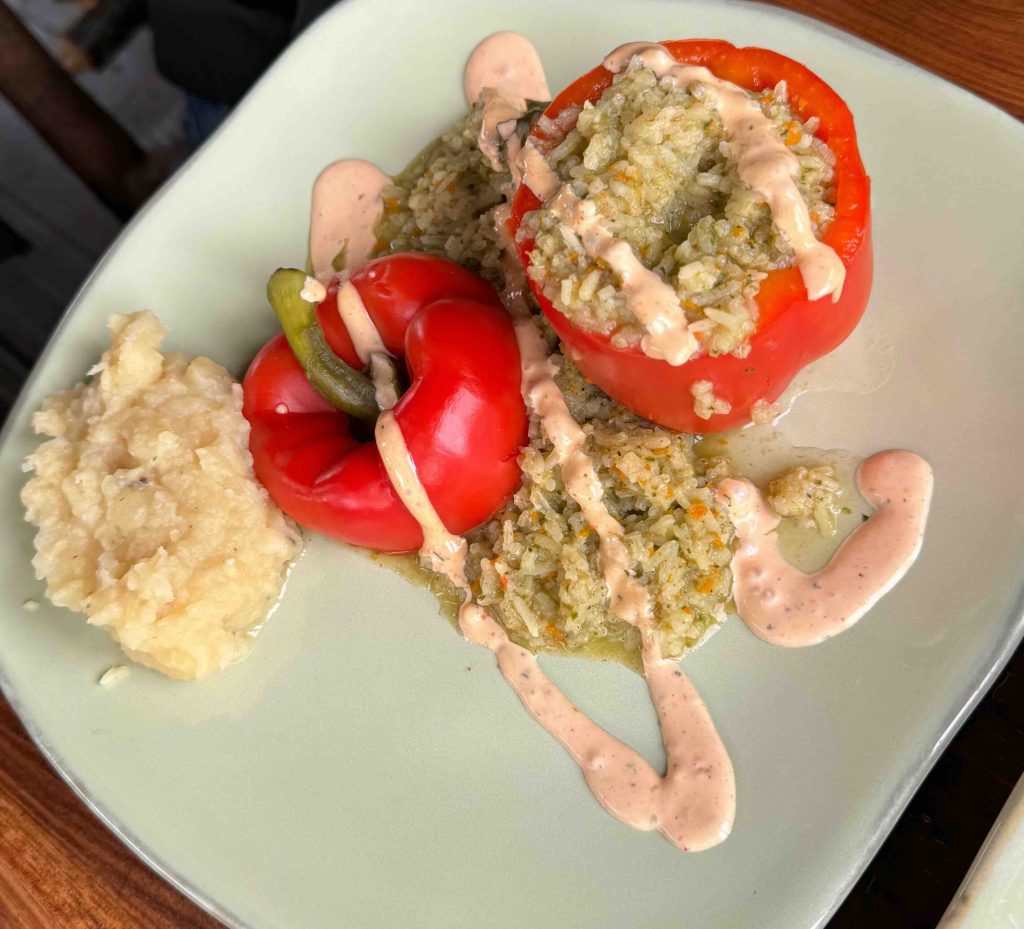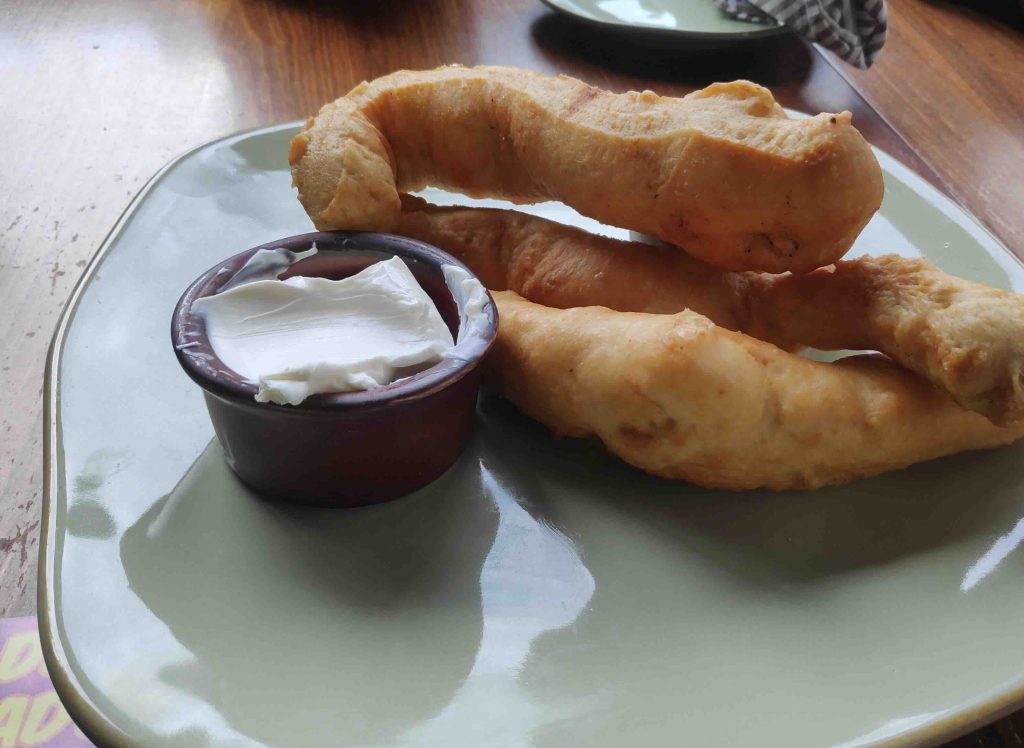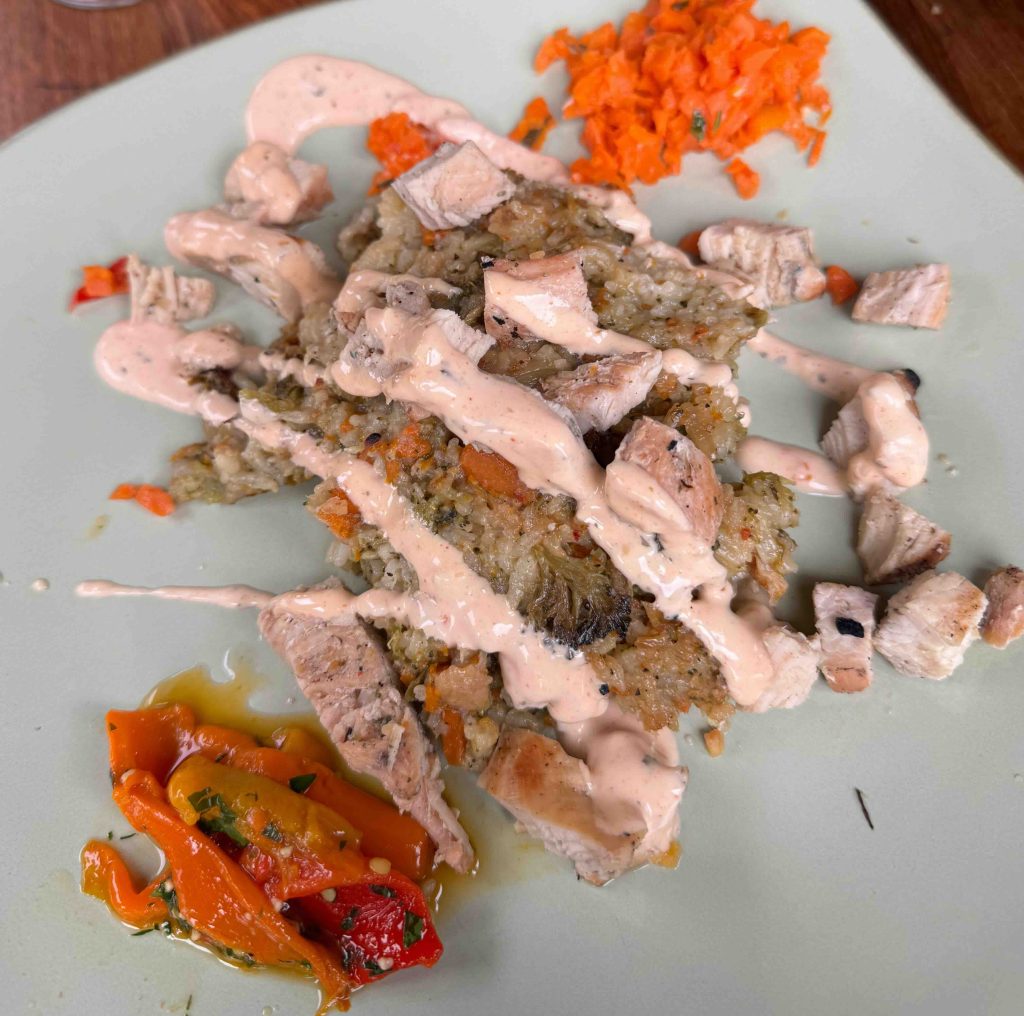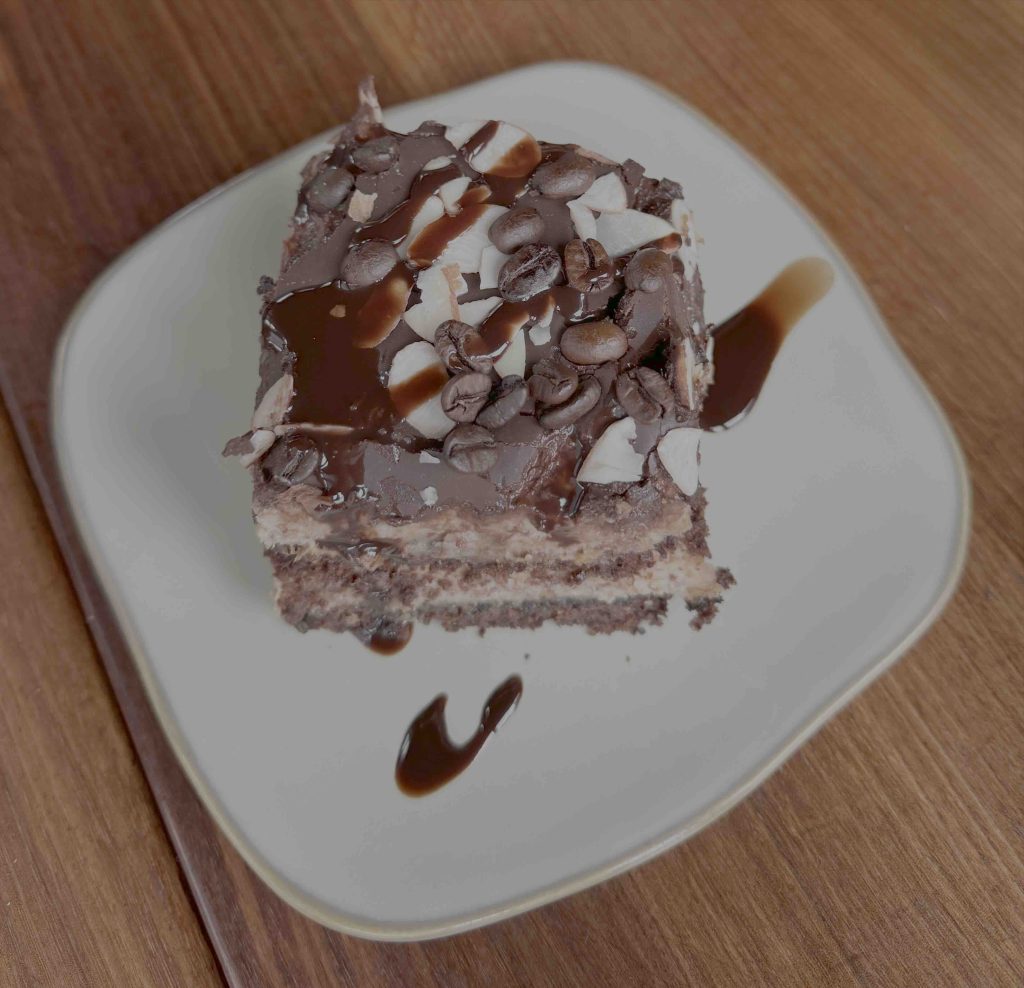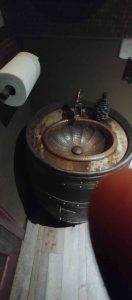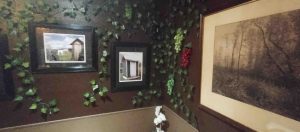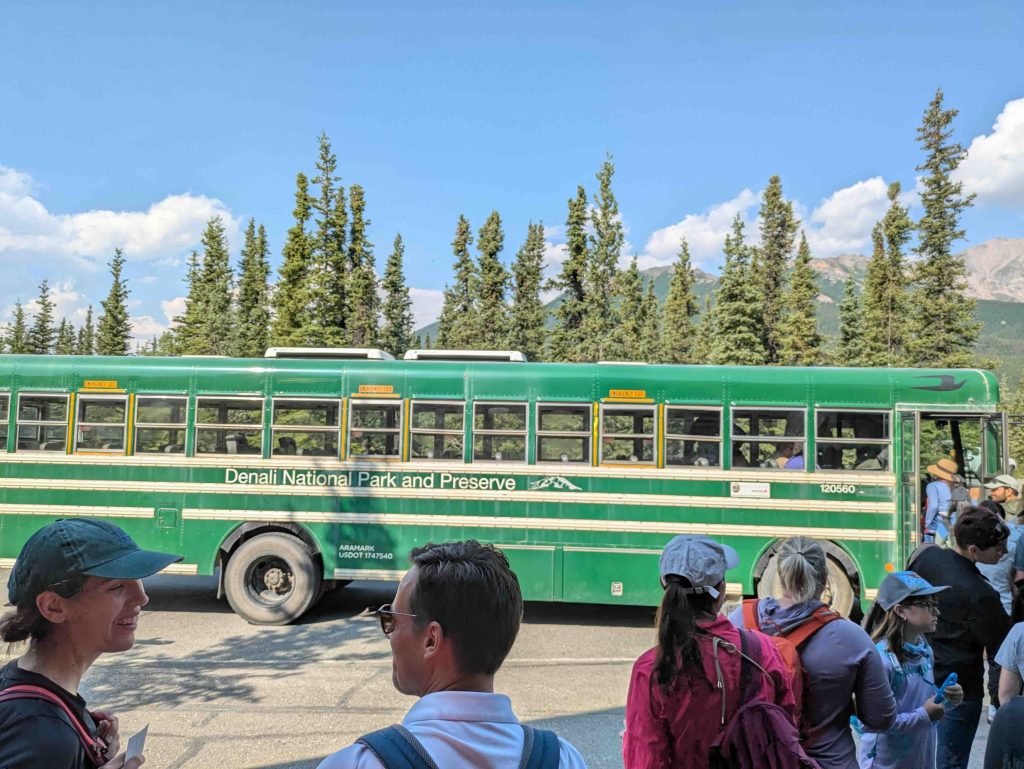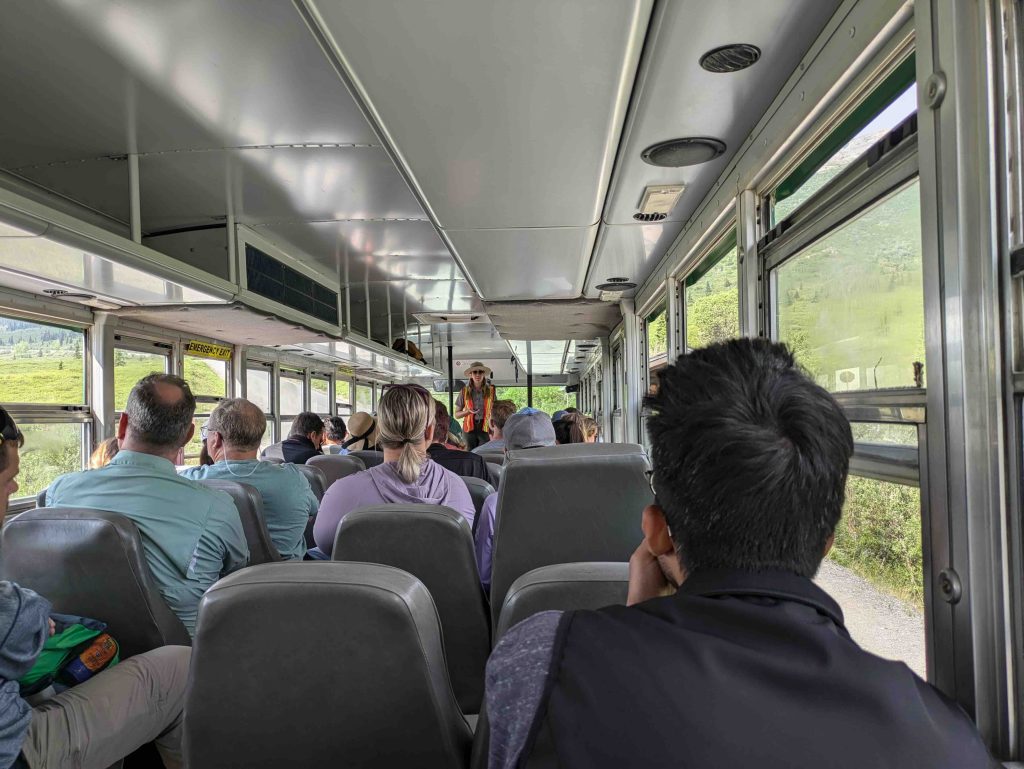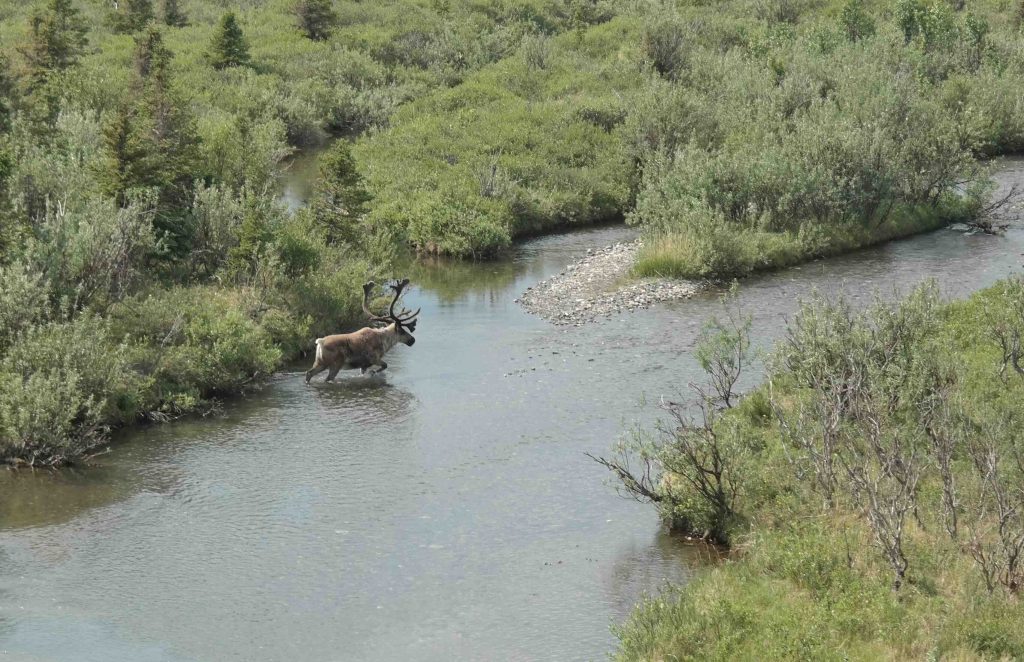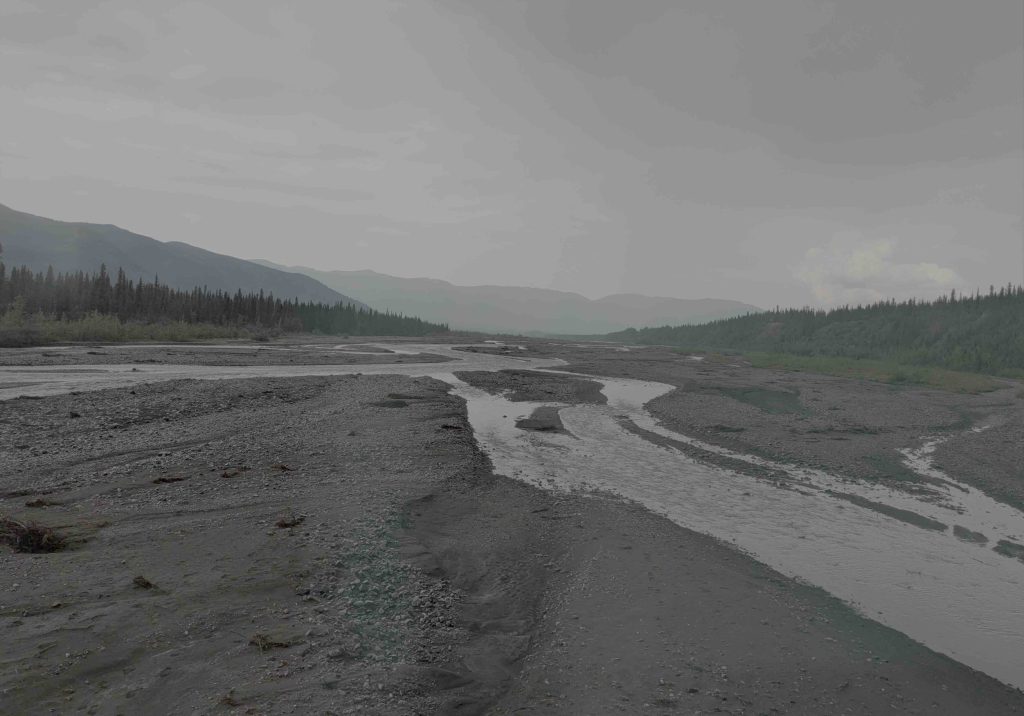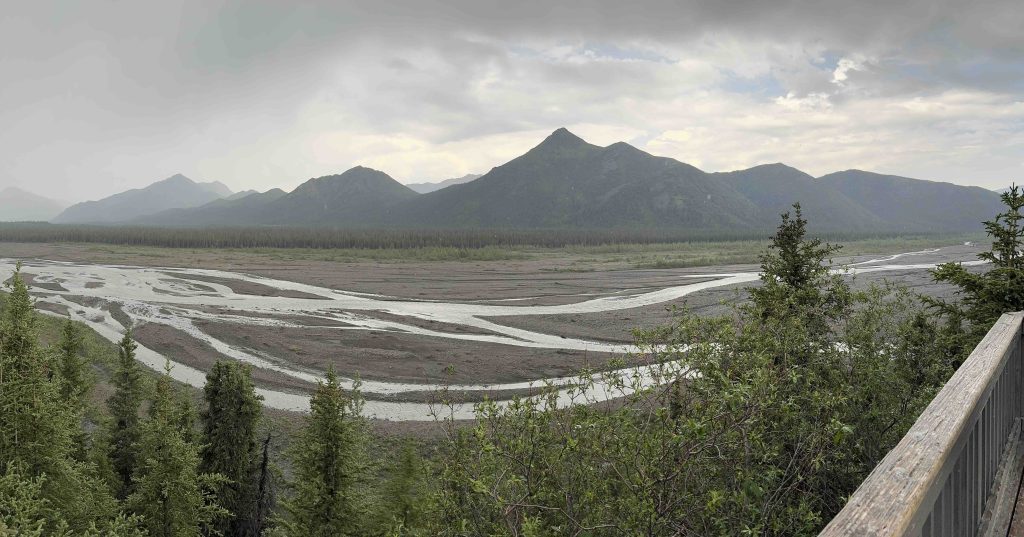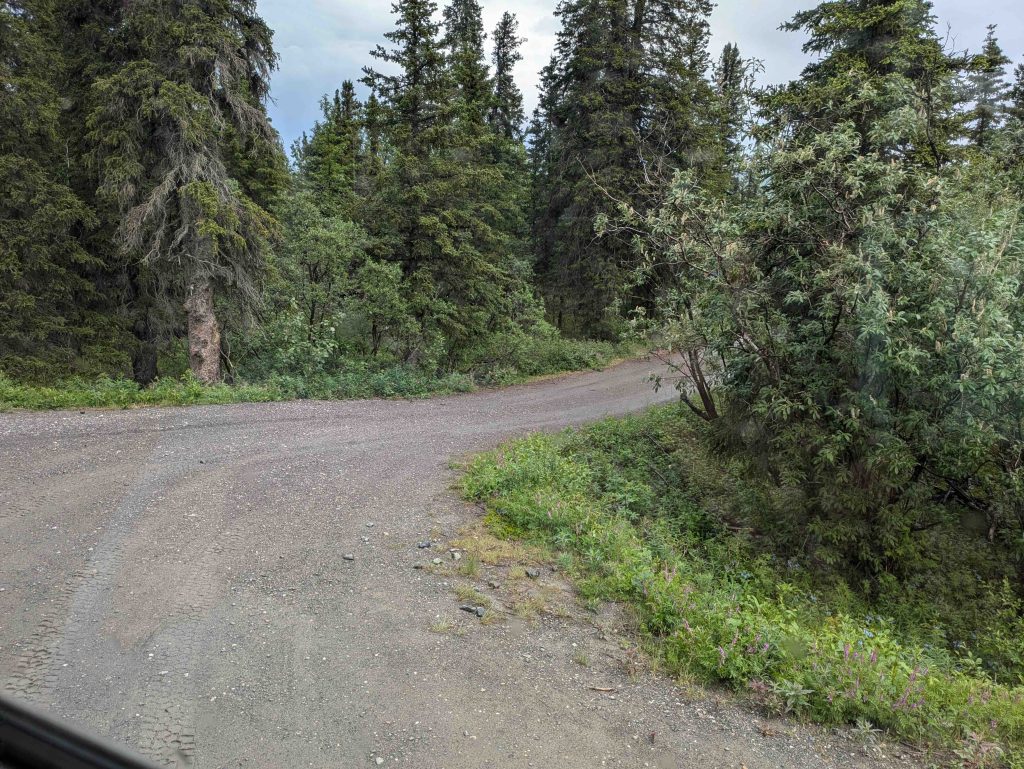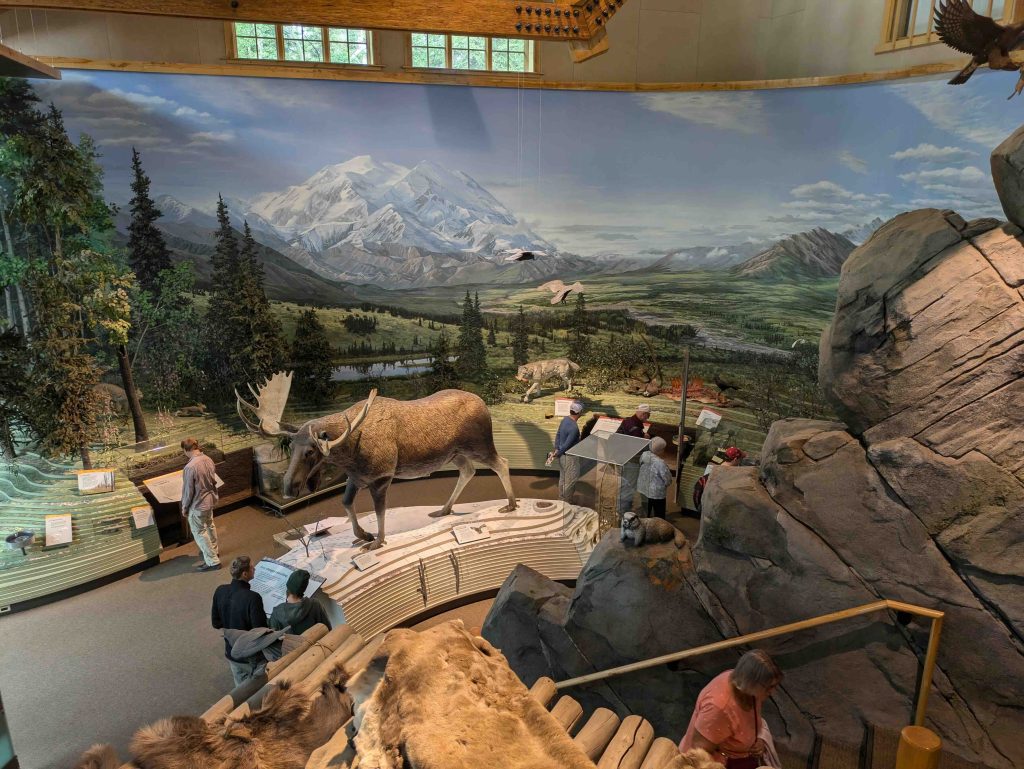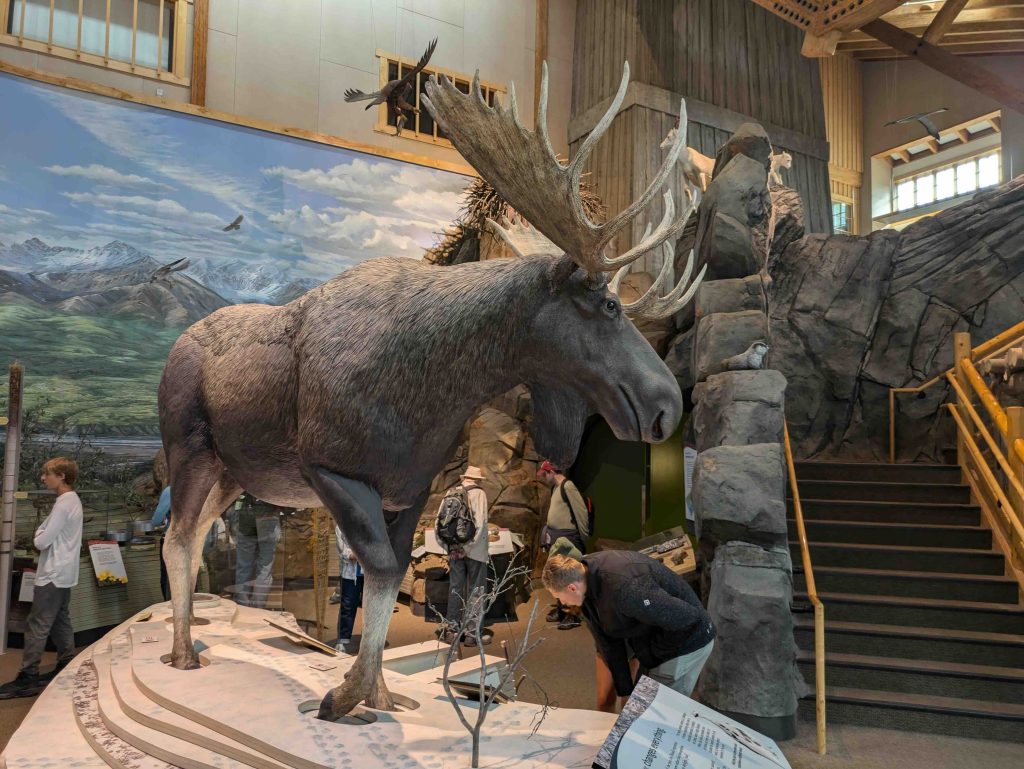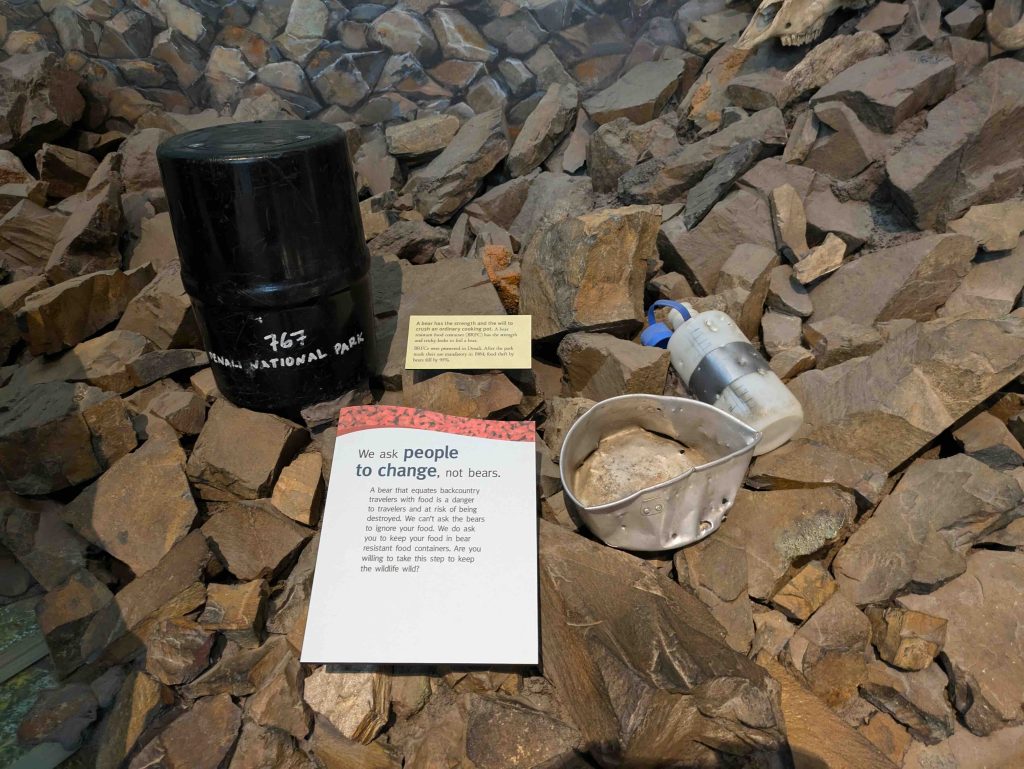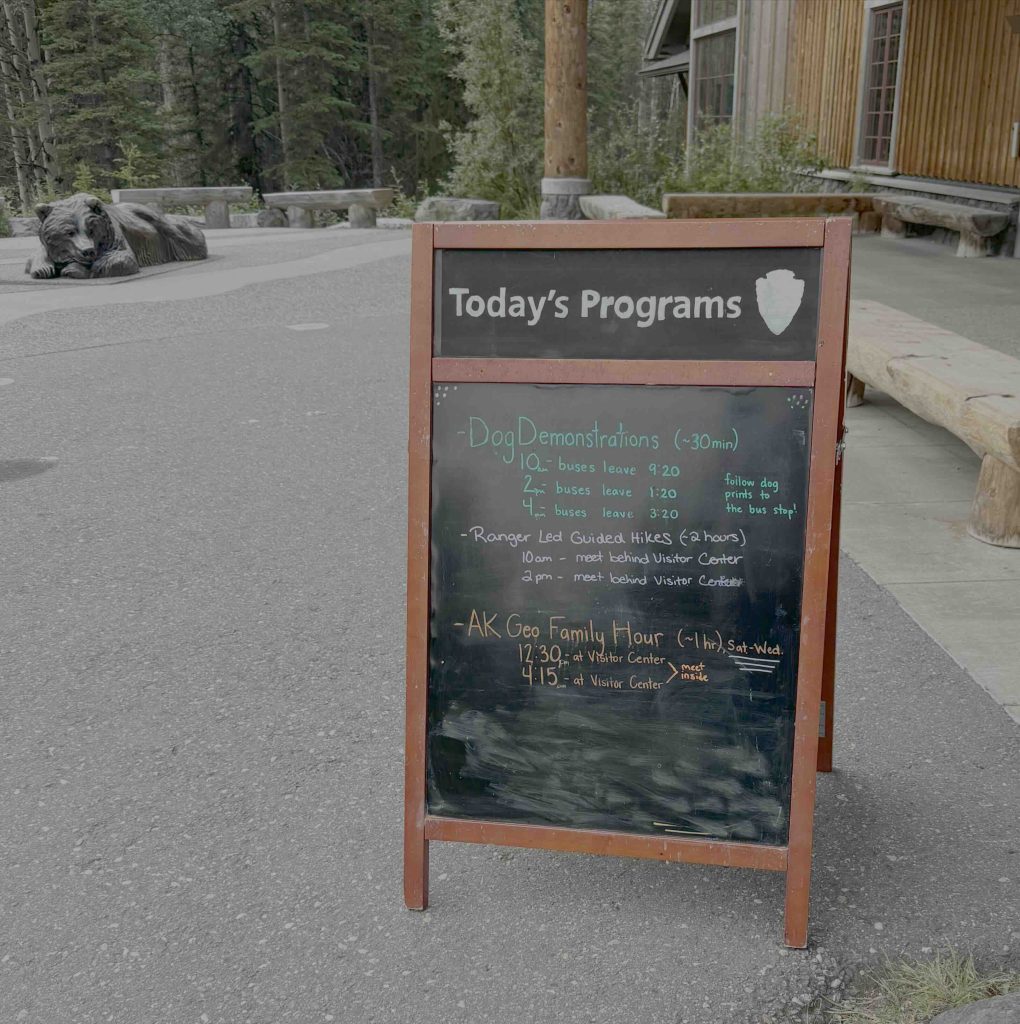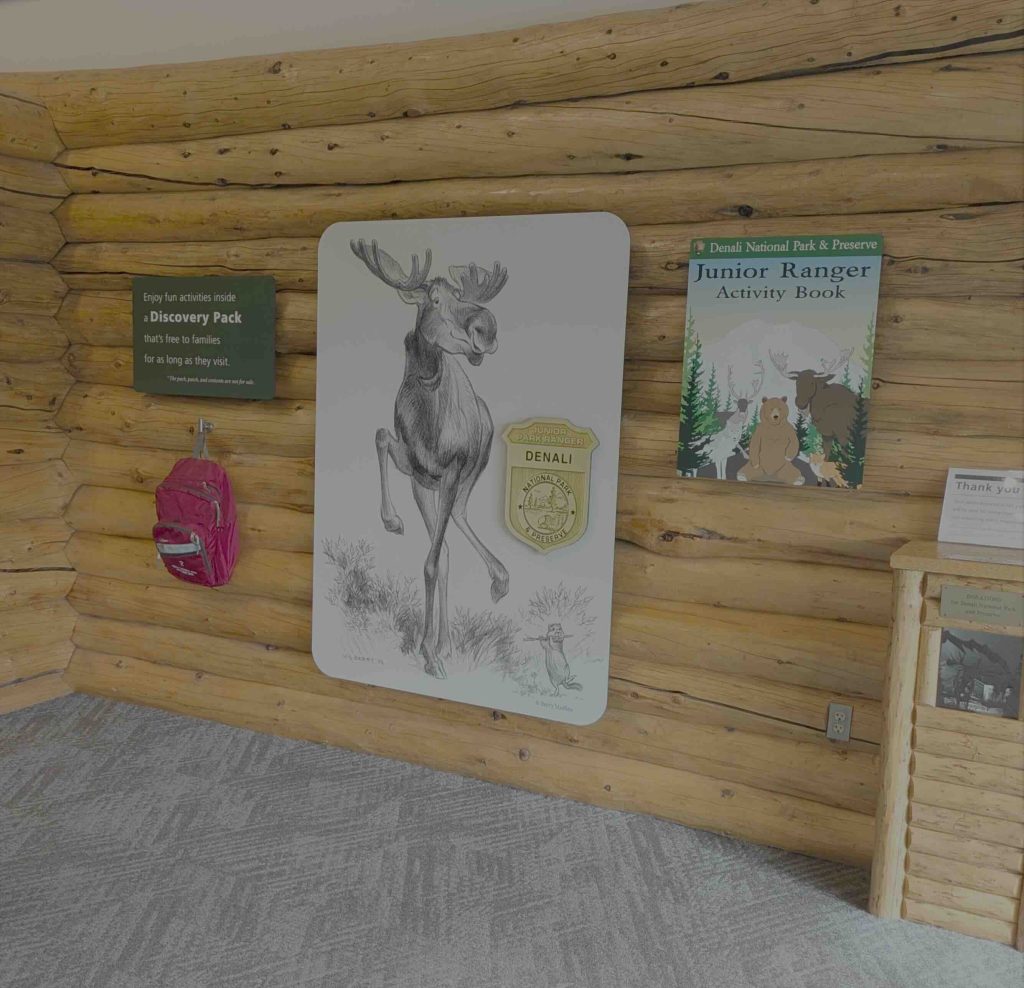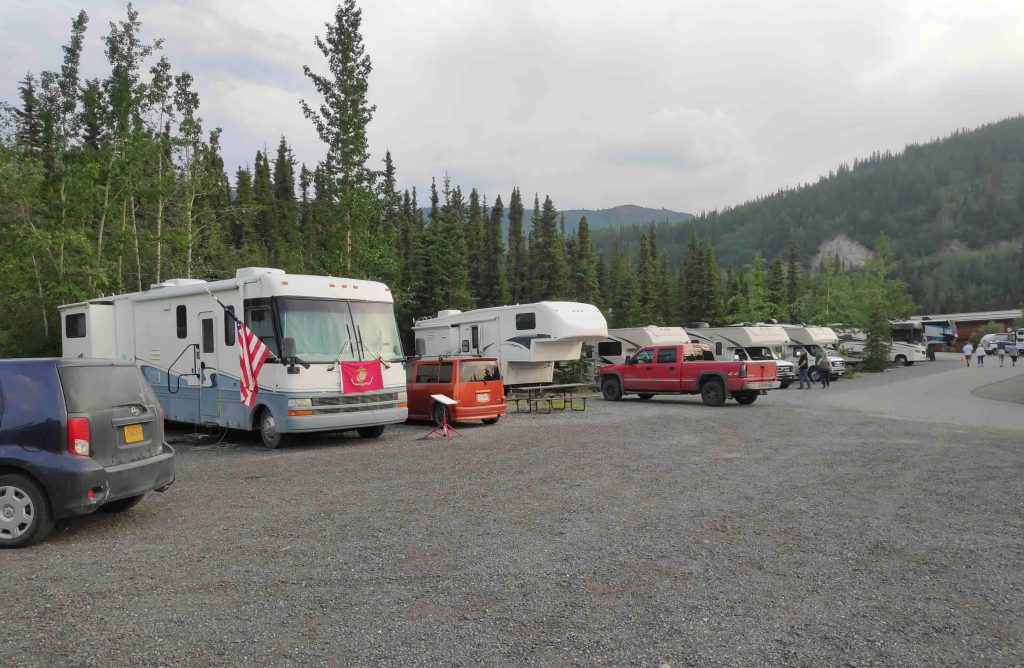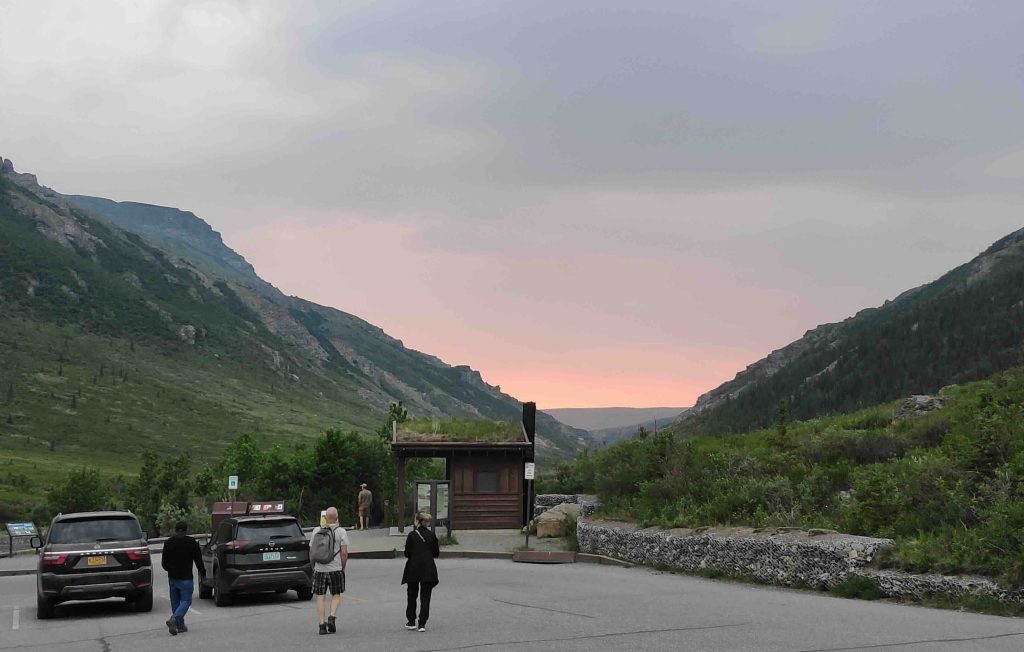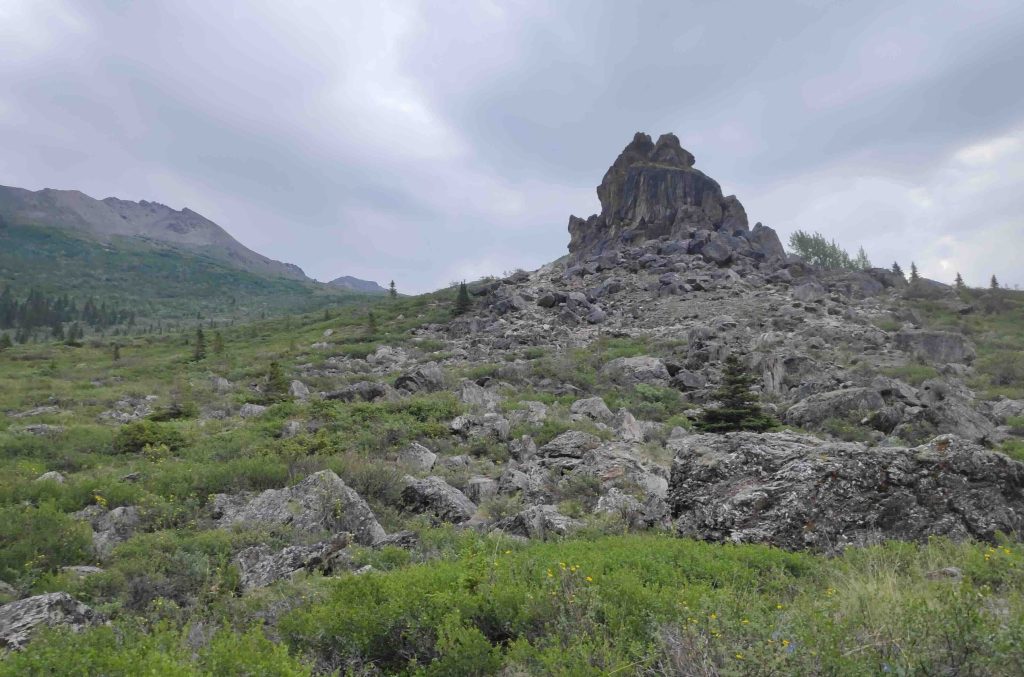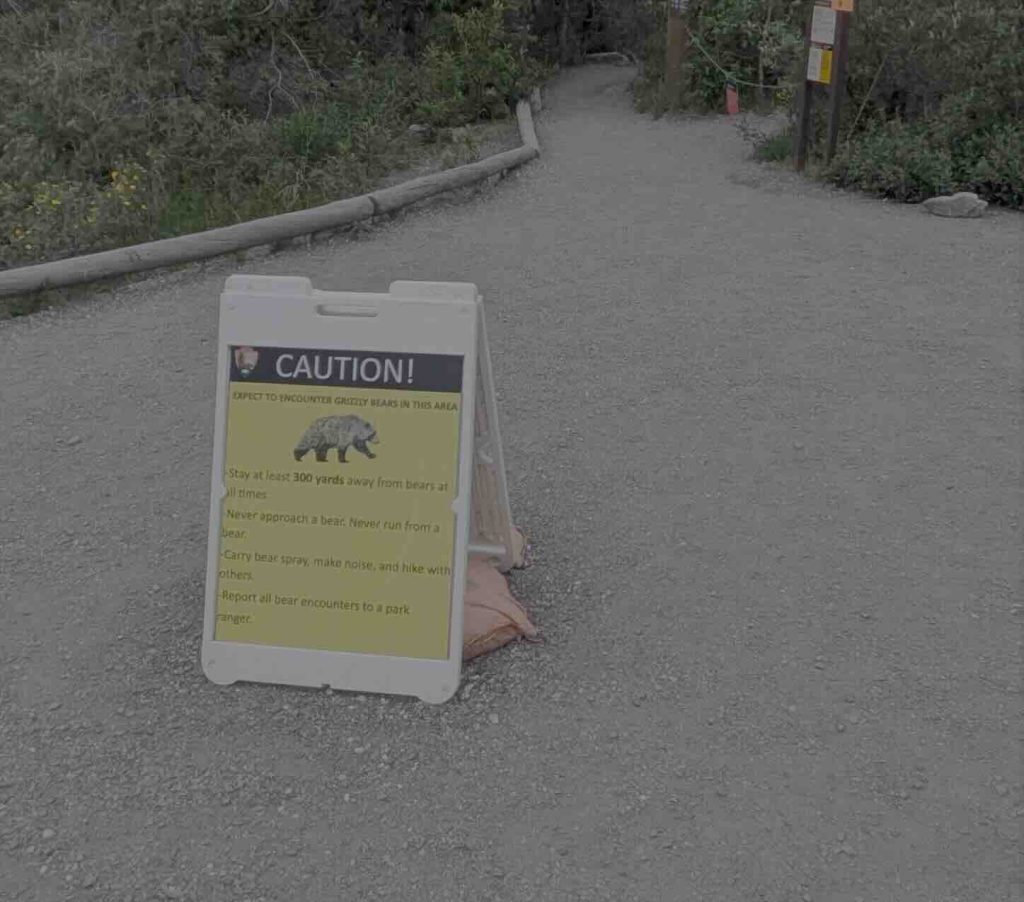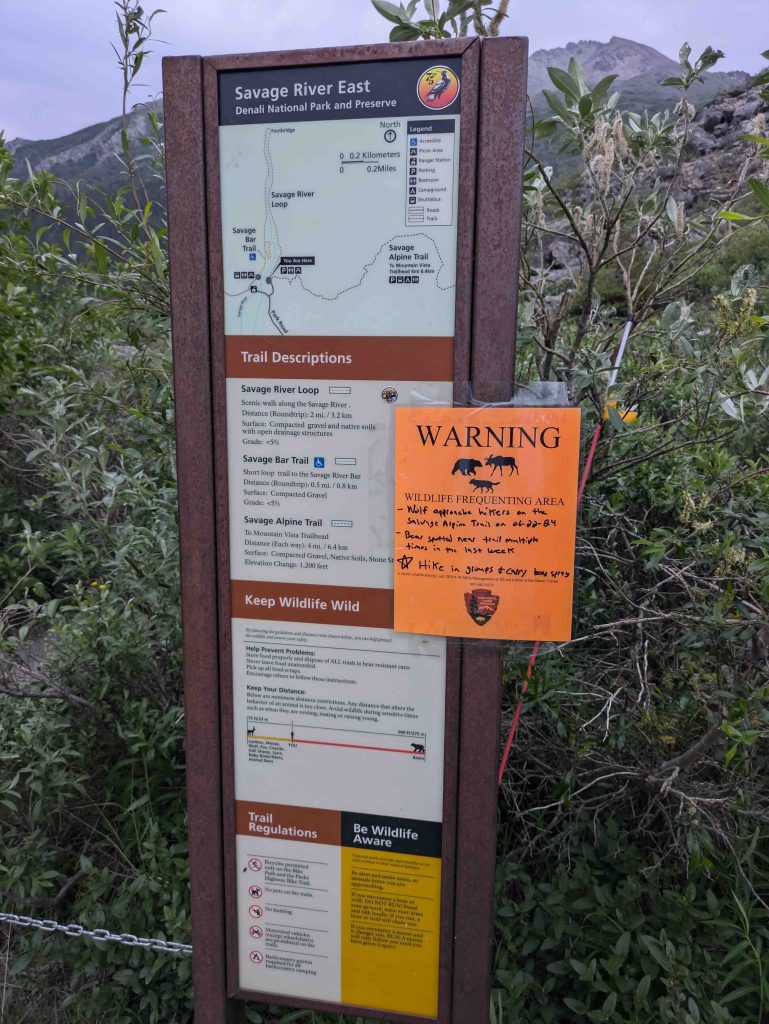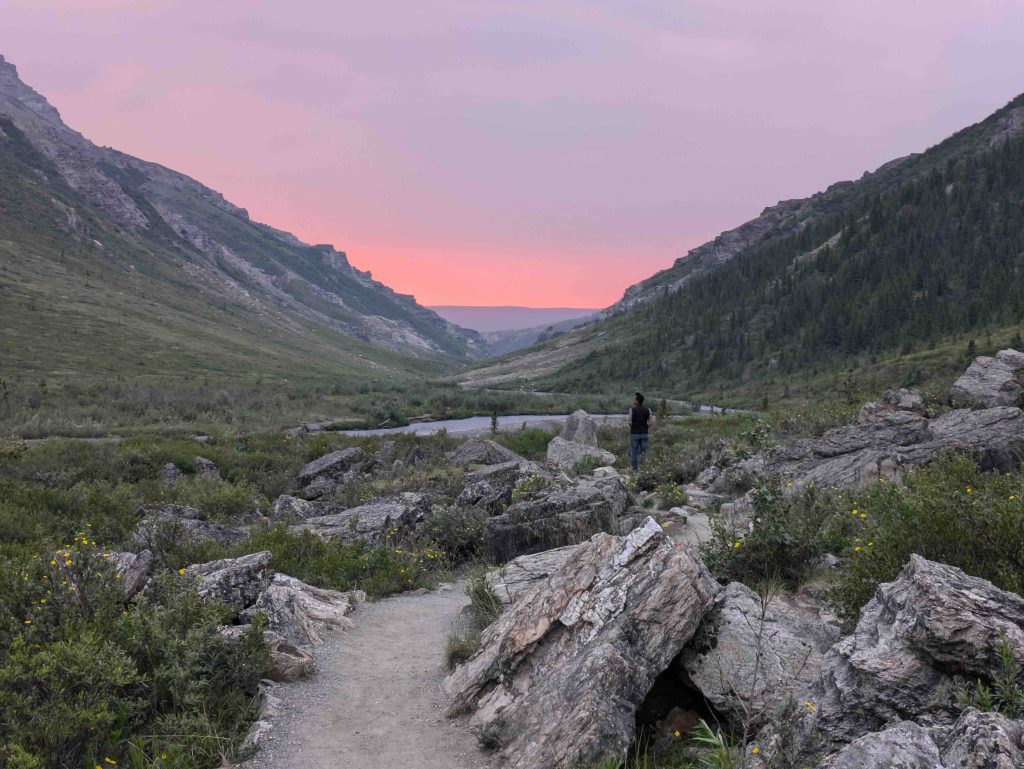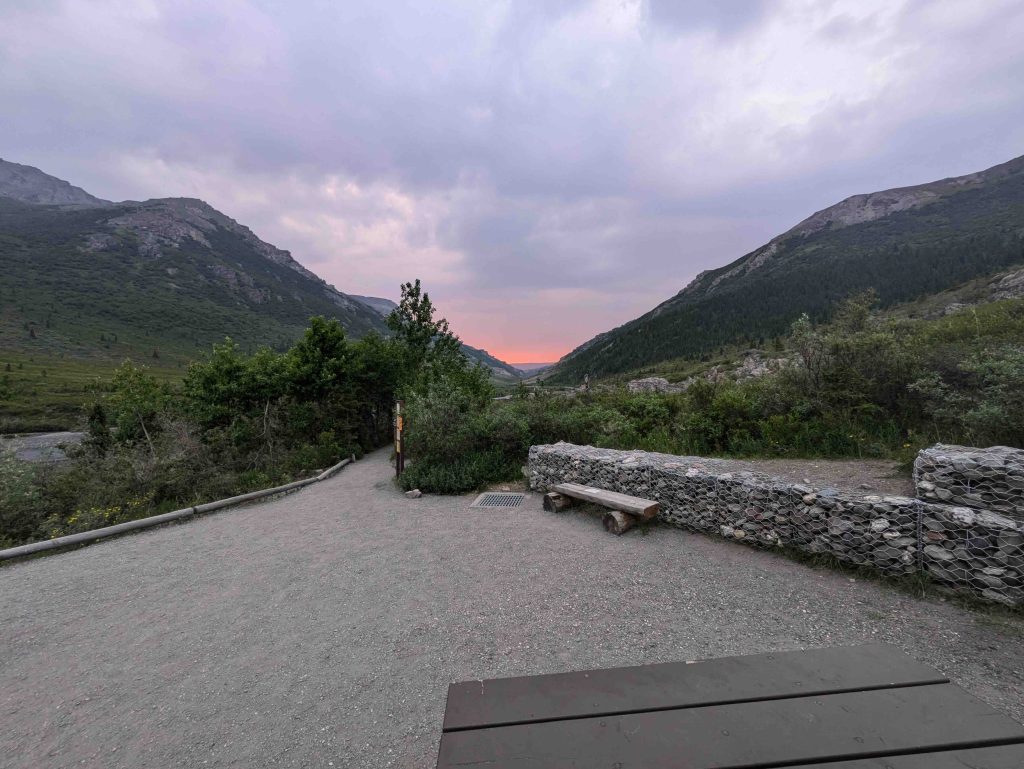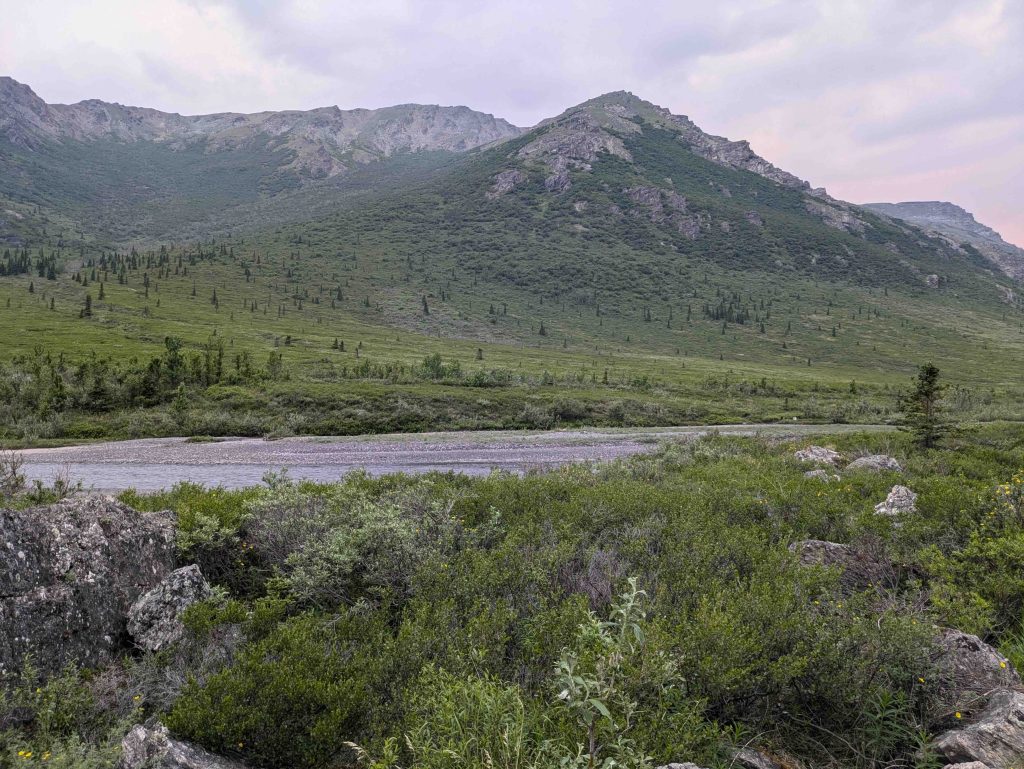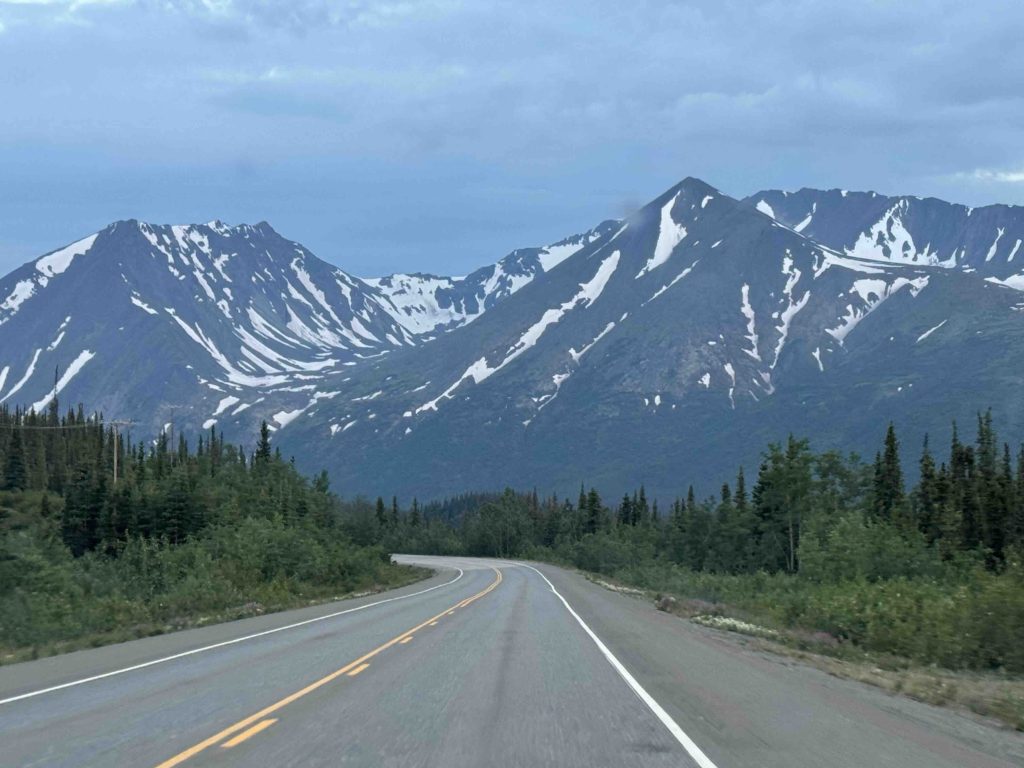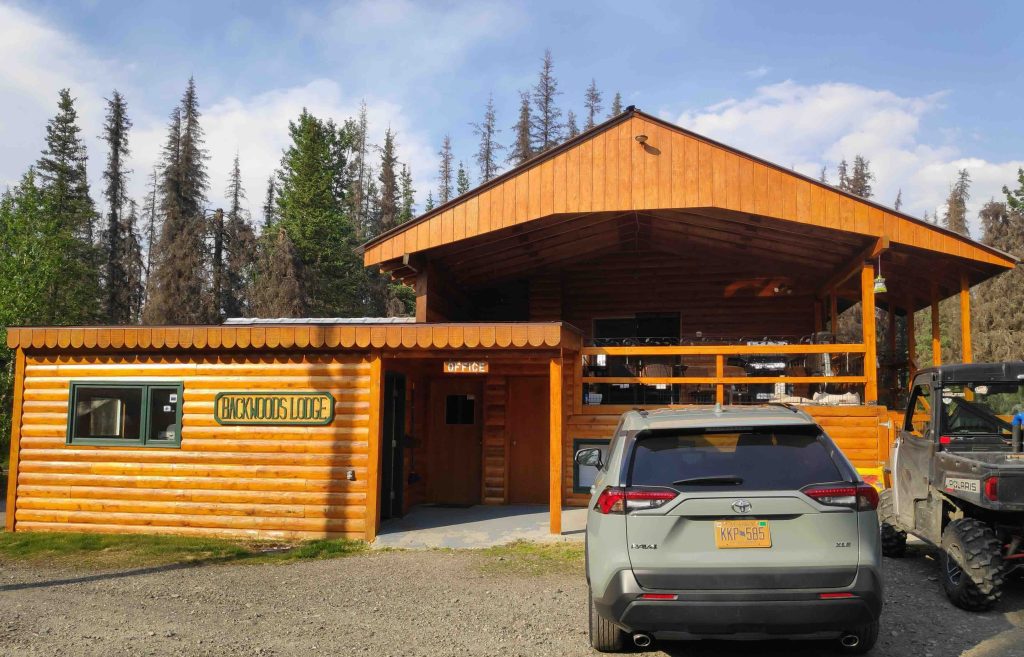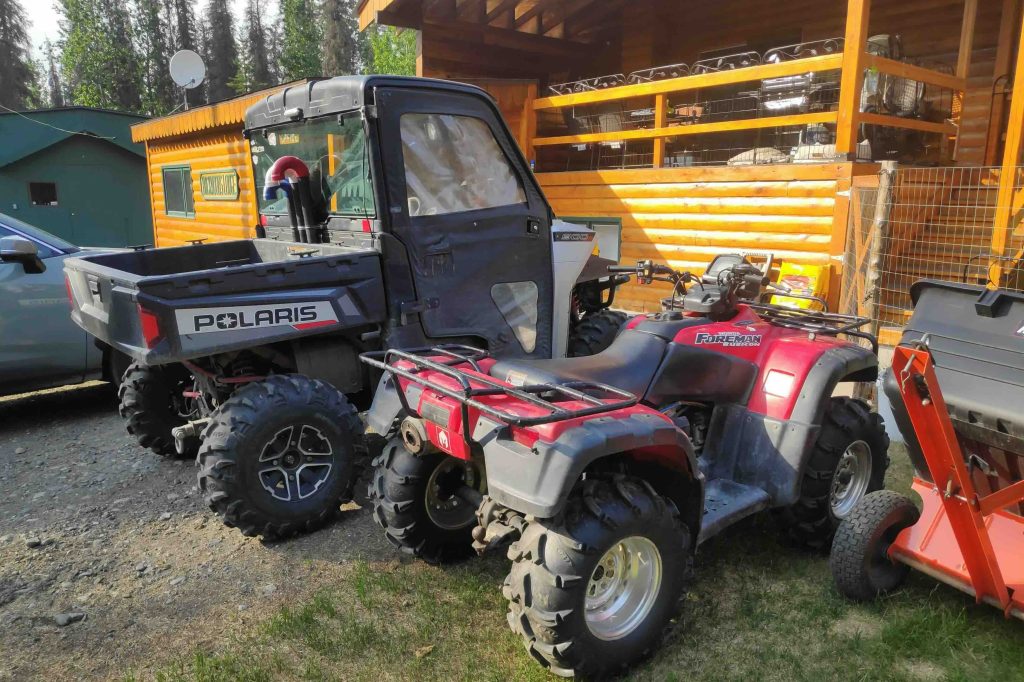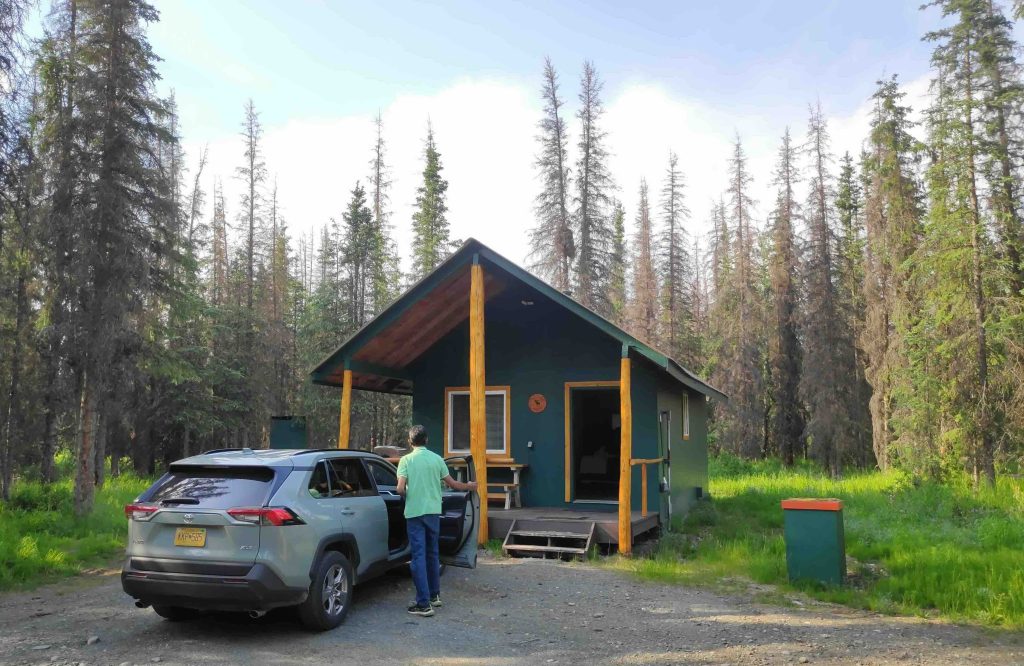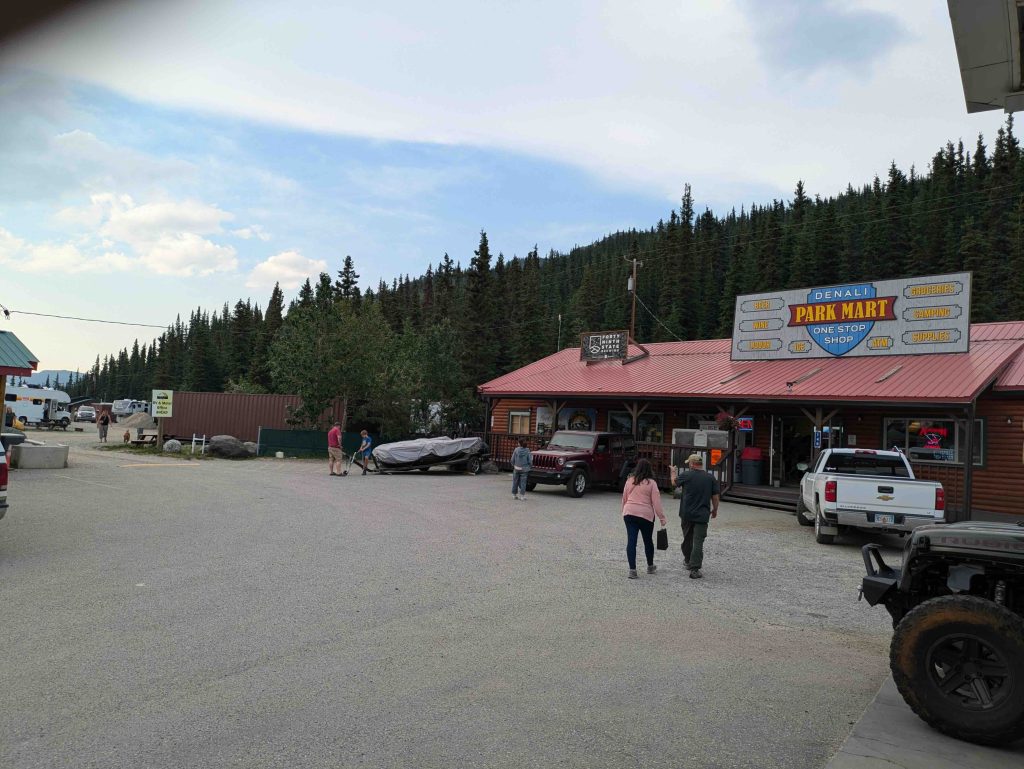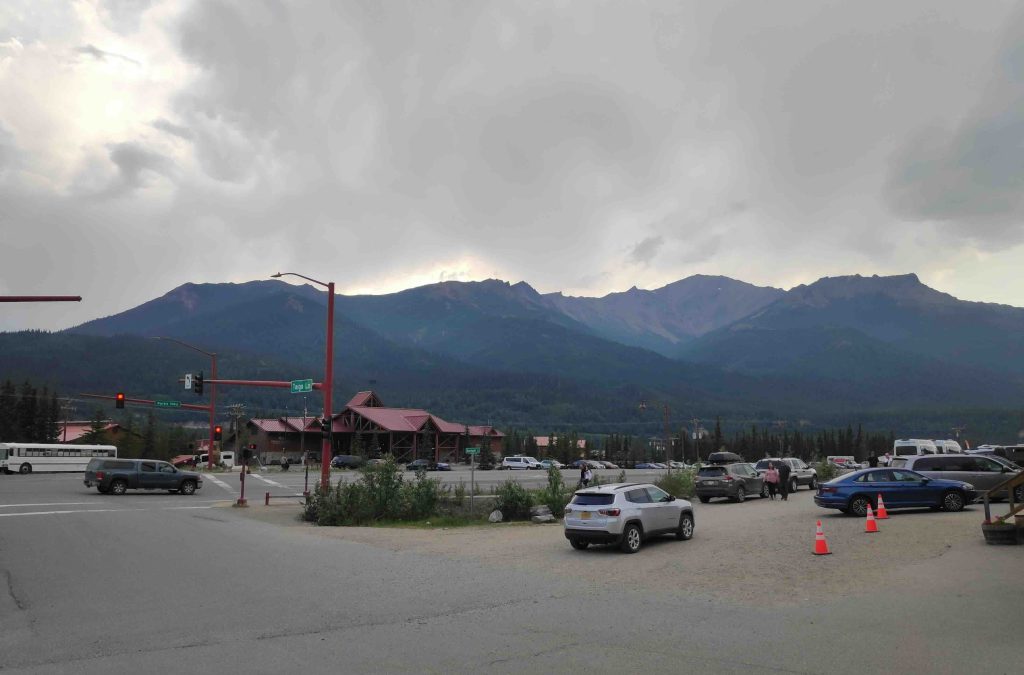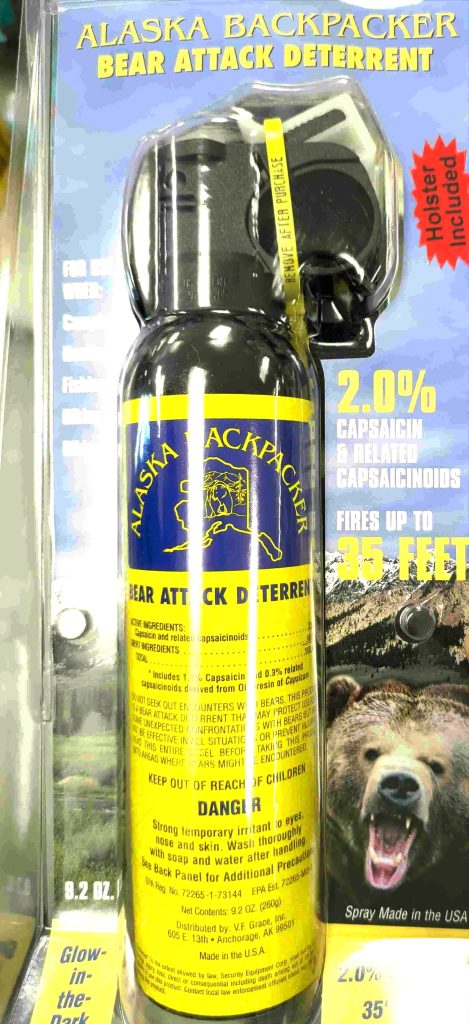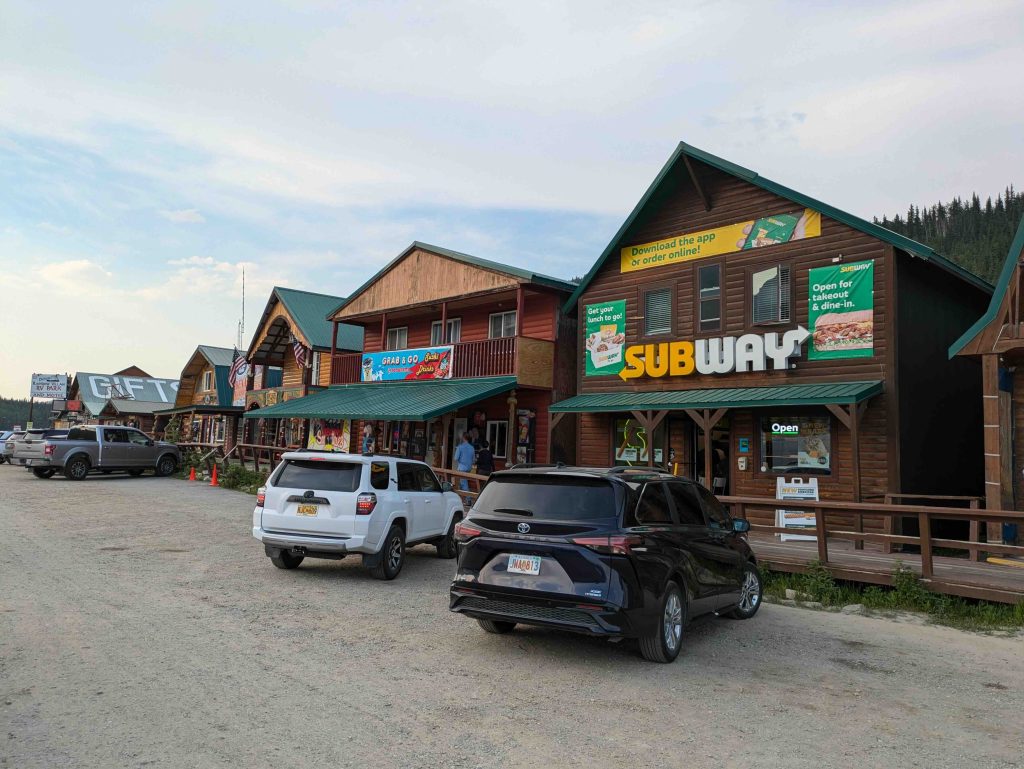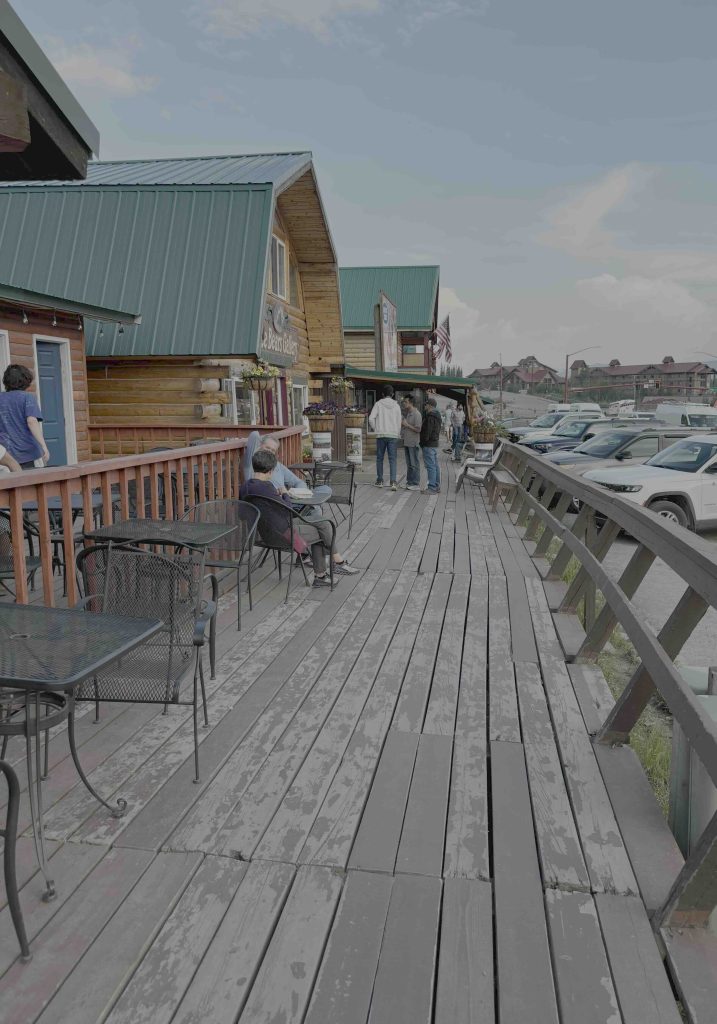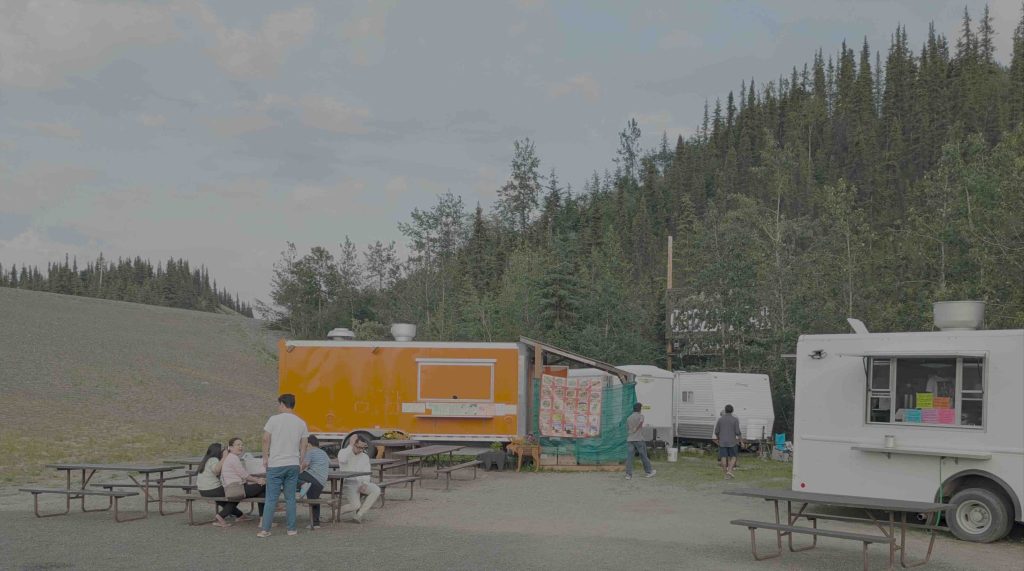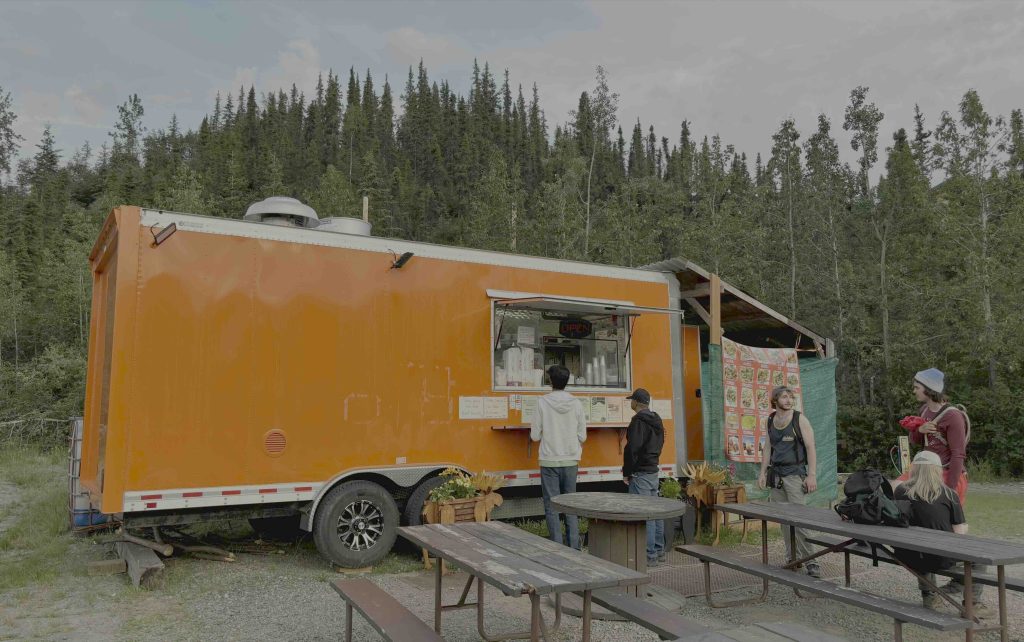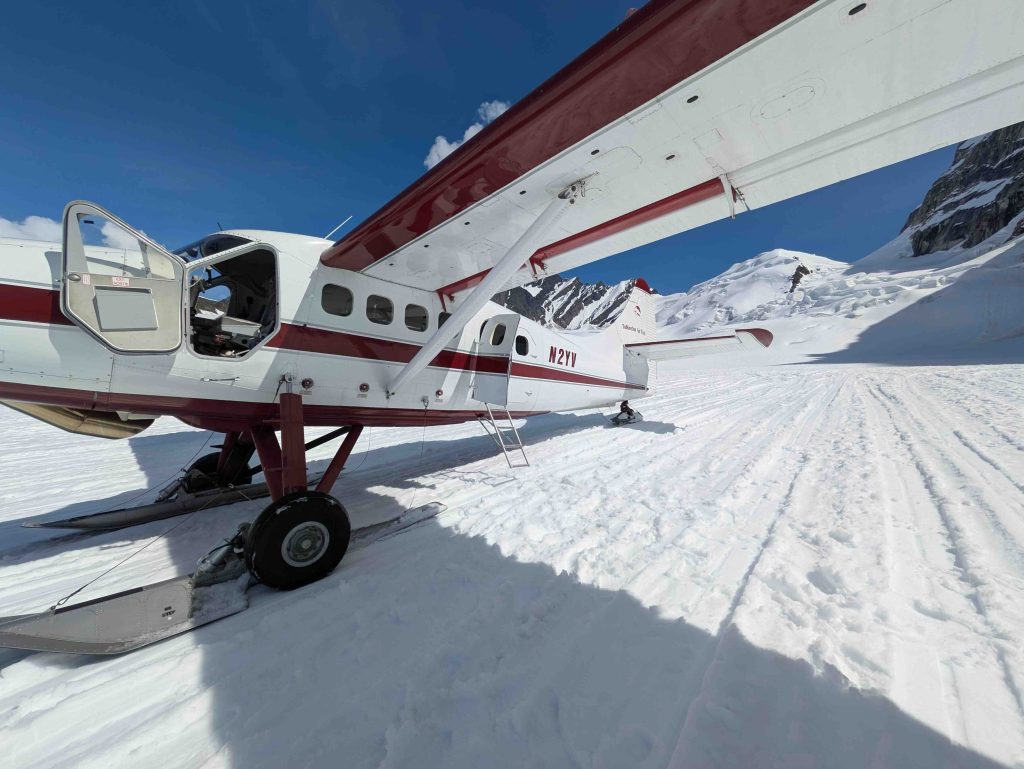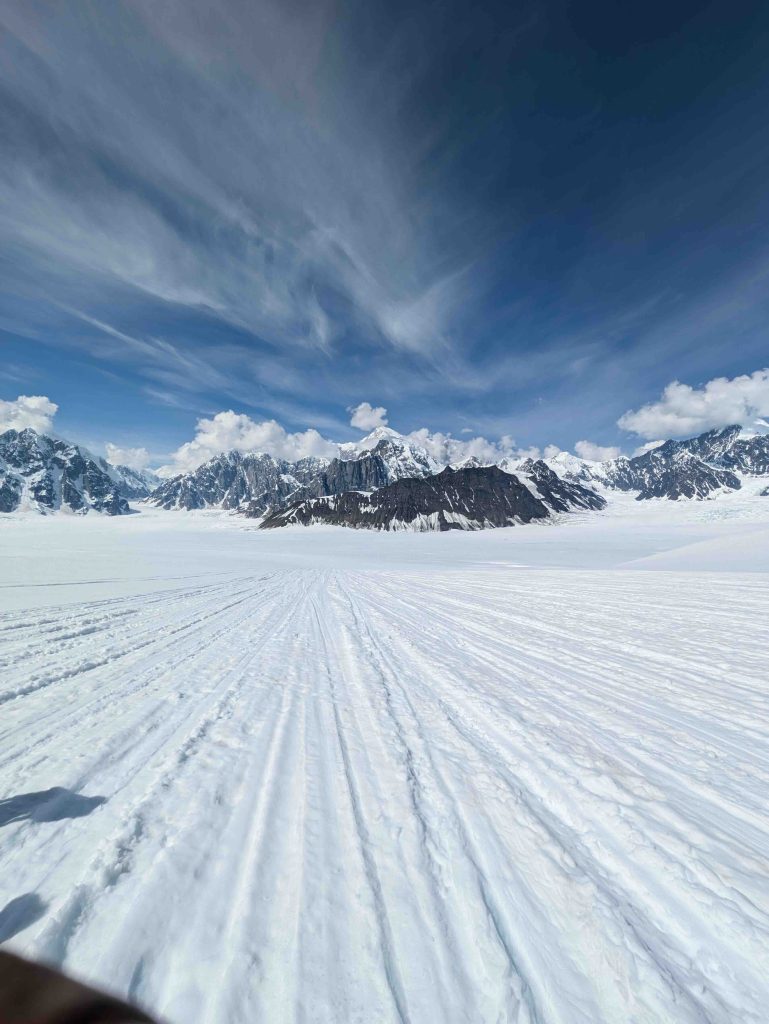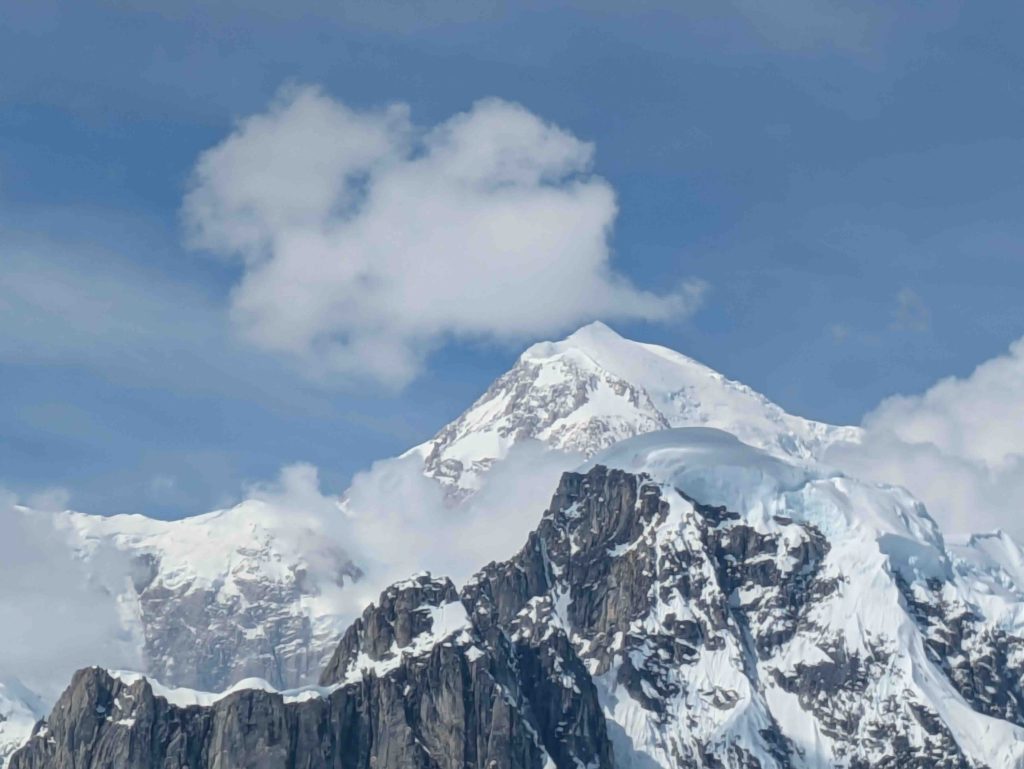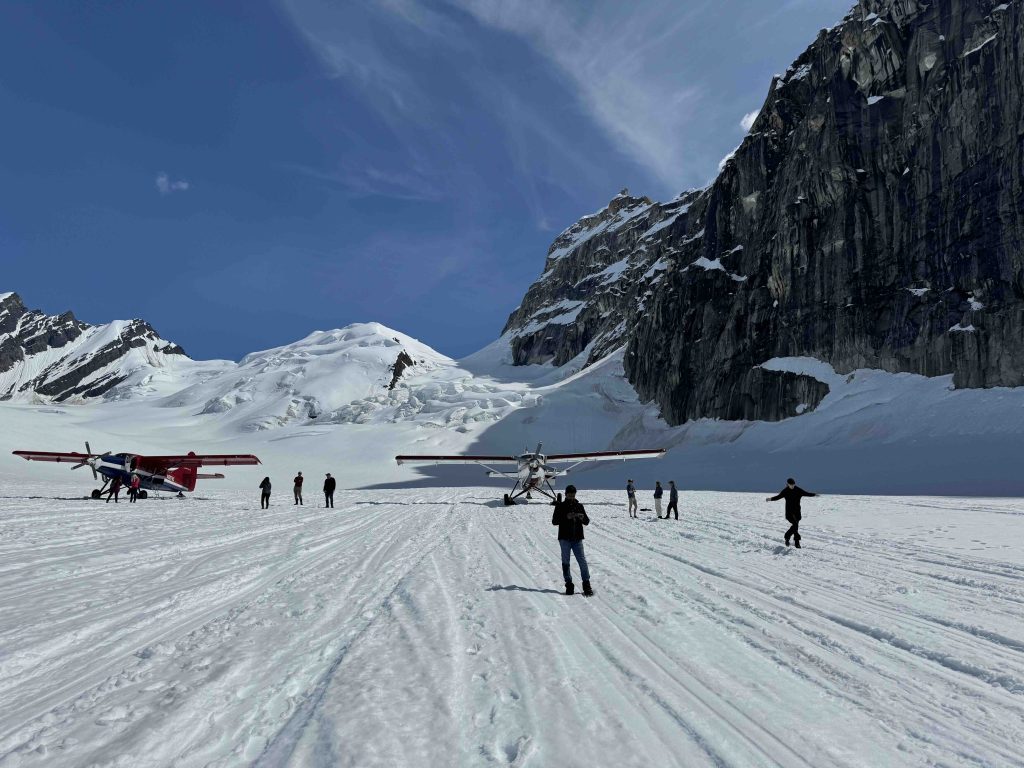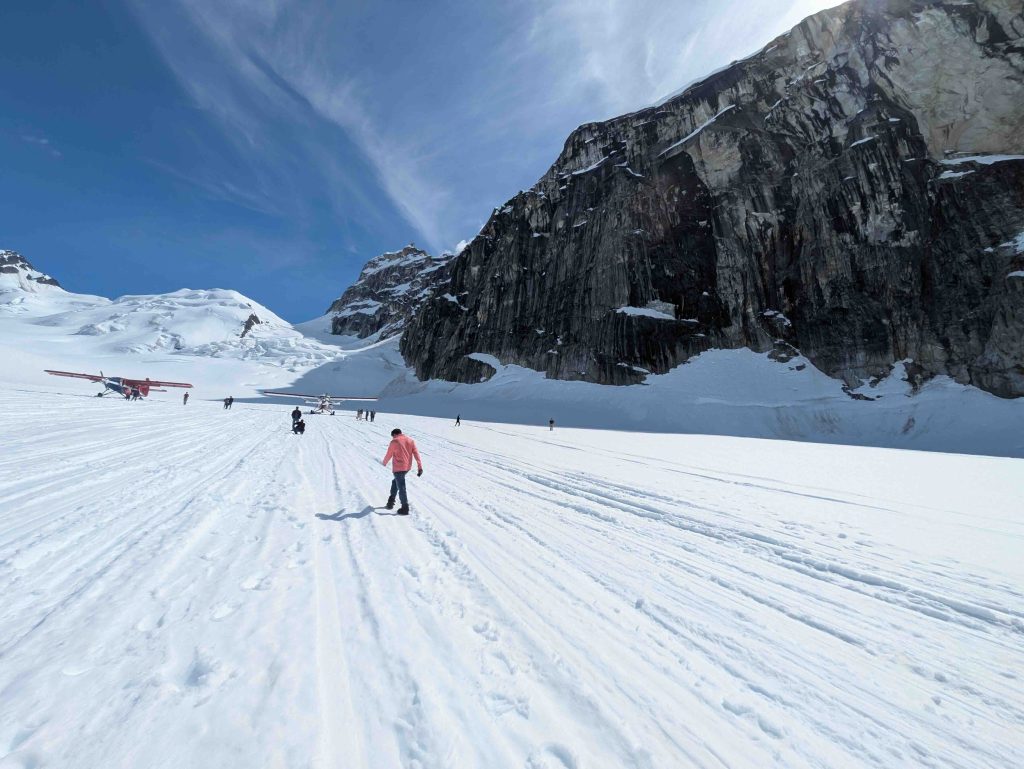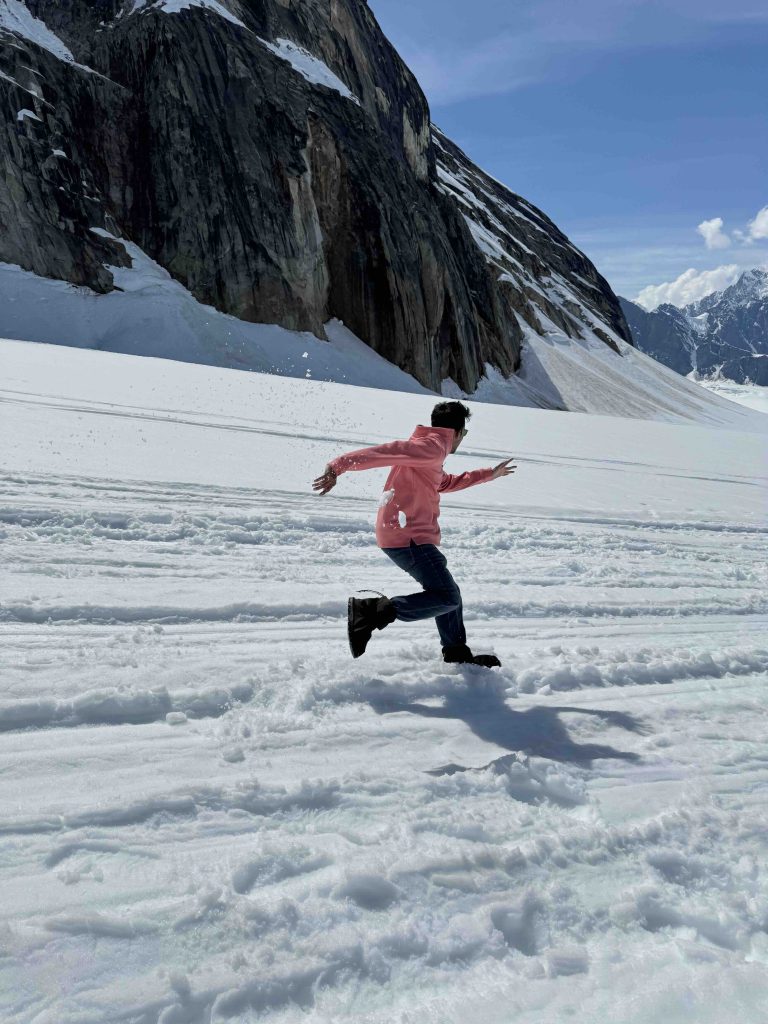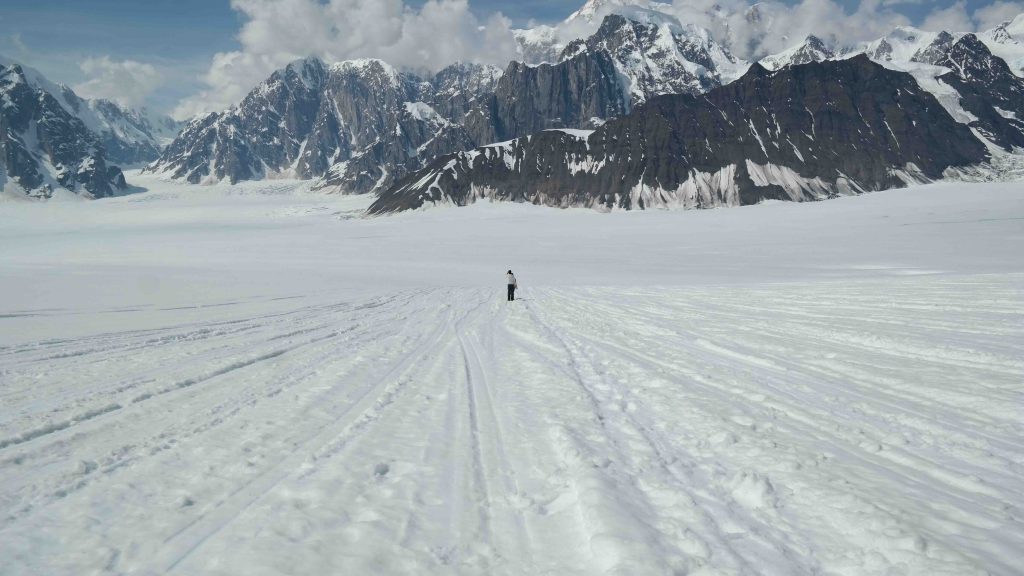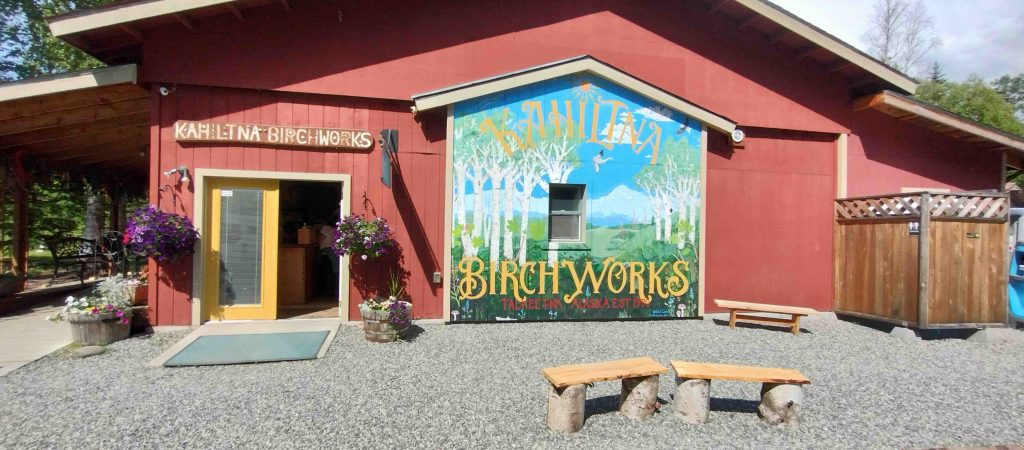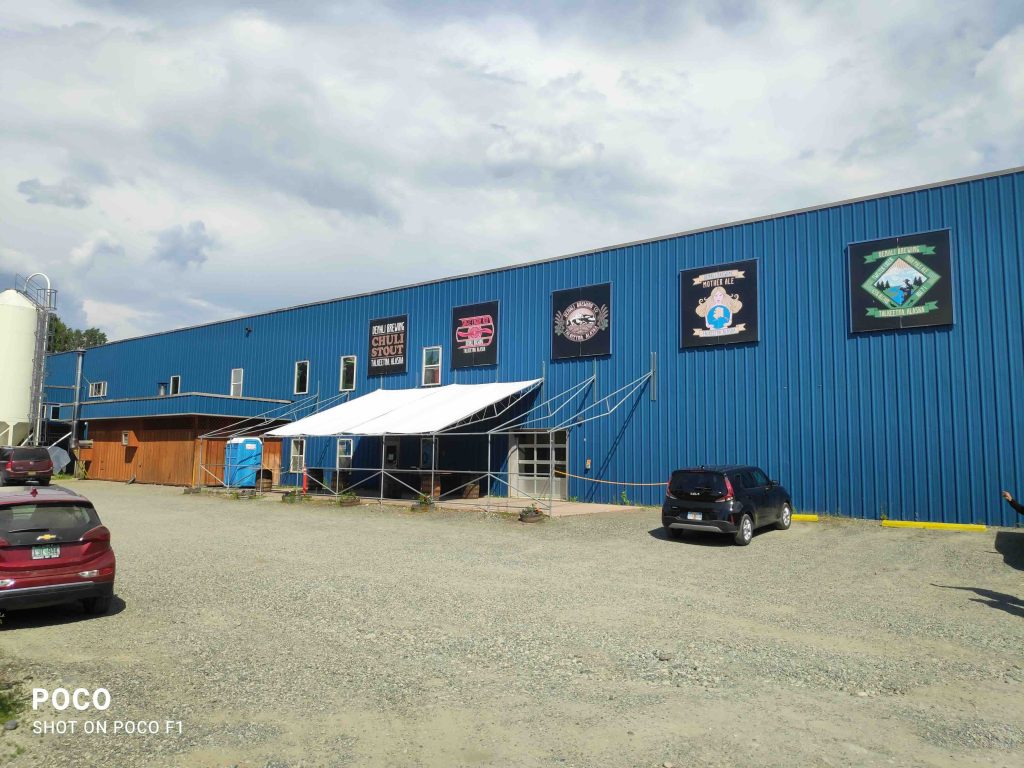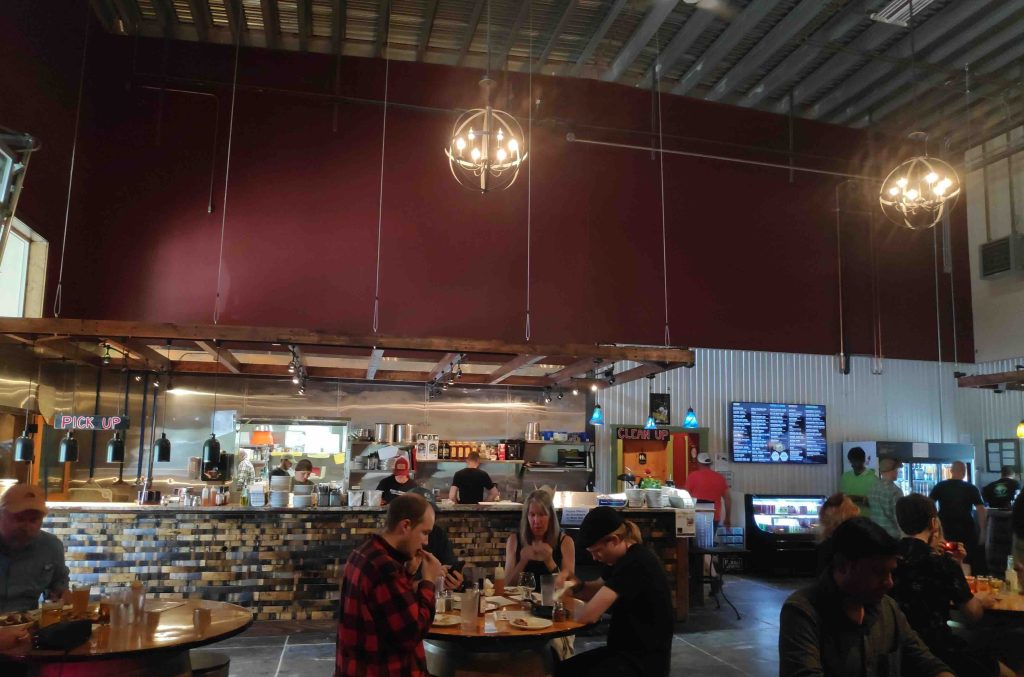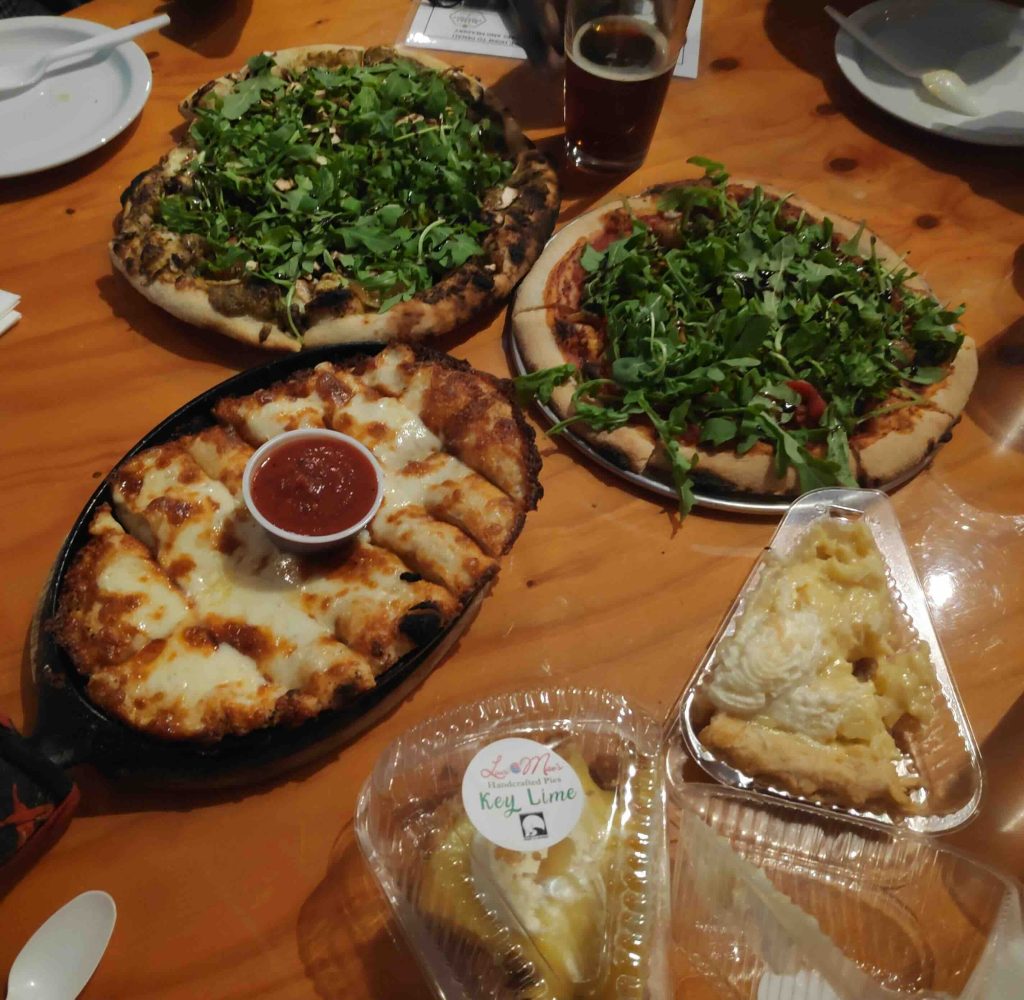Another set of similar animals were there in the zoo – fox, coyote, wolf – in ascending order of size. The nice thing here was that each of these animals had a name that was mentioned on the boards outside along with a little blurb about it – ex: there were 2 foxes – Storm and Jade; Jade was an orphan picked up by joggers when they realized that there were no signs of the mother around; Storm, on the other hand, was illegally owned as a pet, and thus was seized and brought to the conservatory.
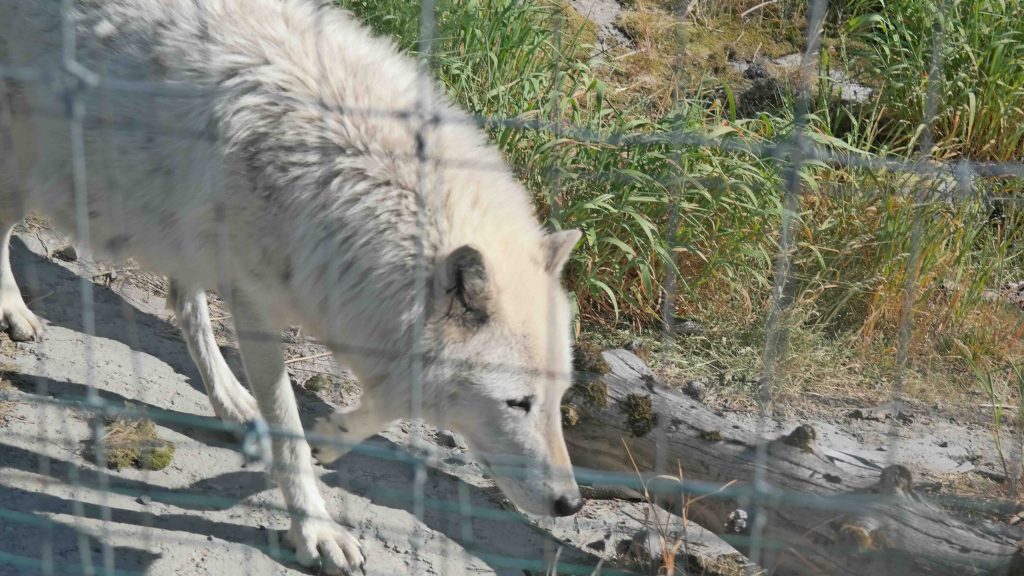
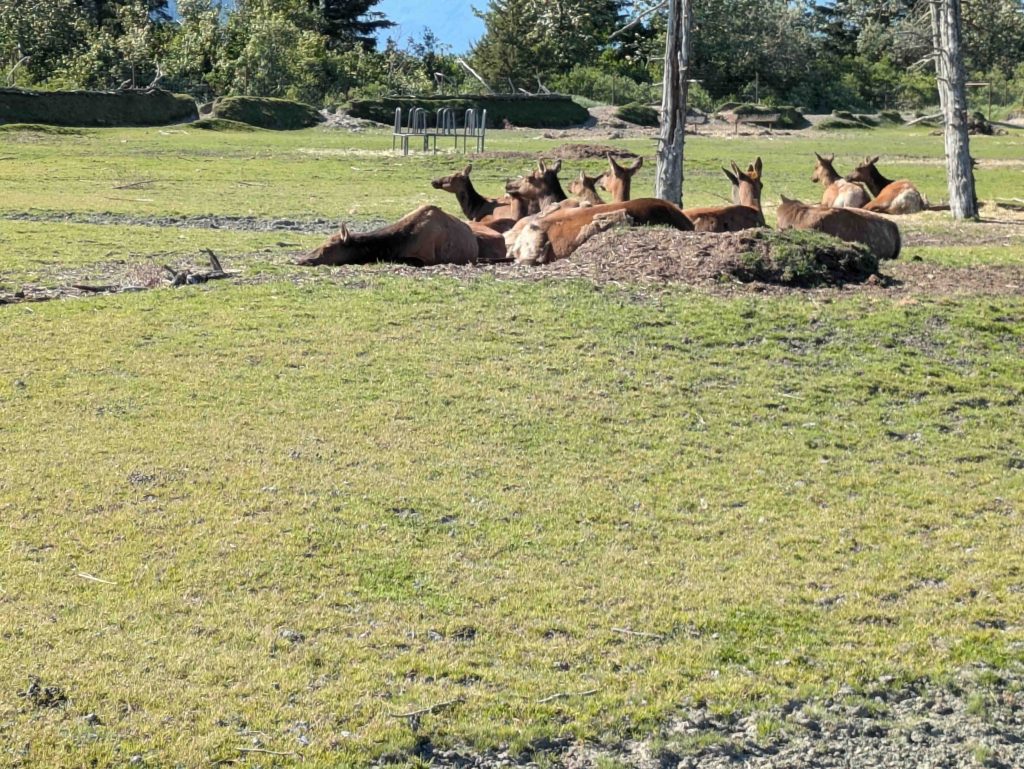
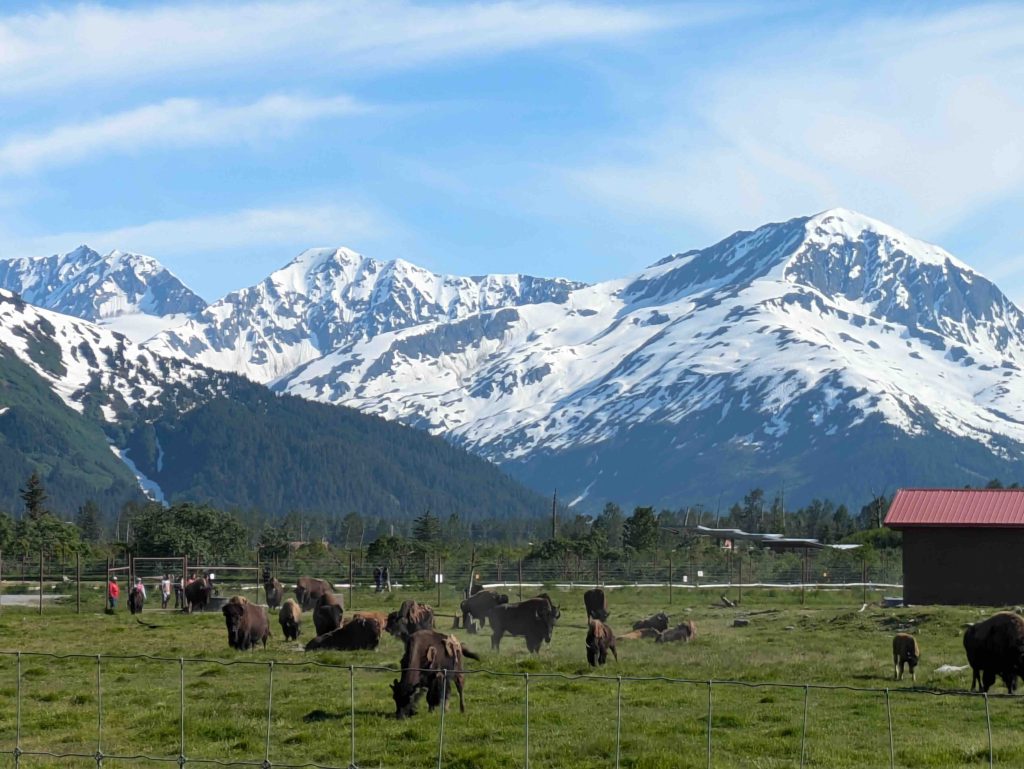
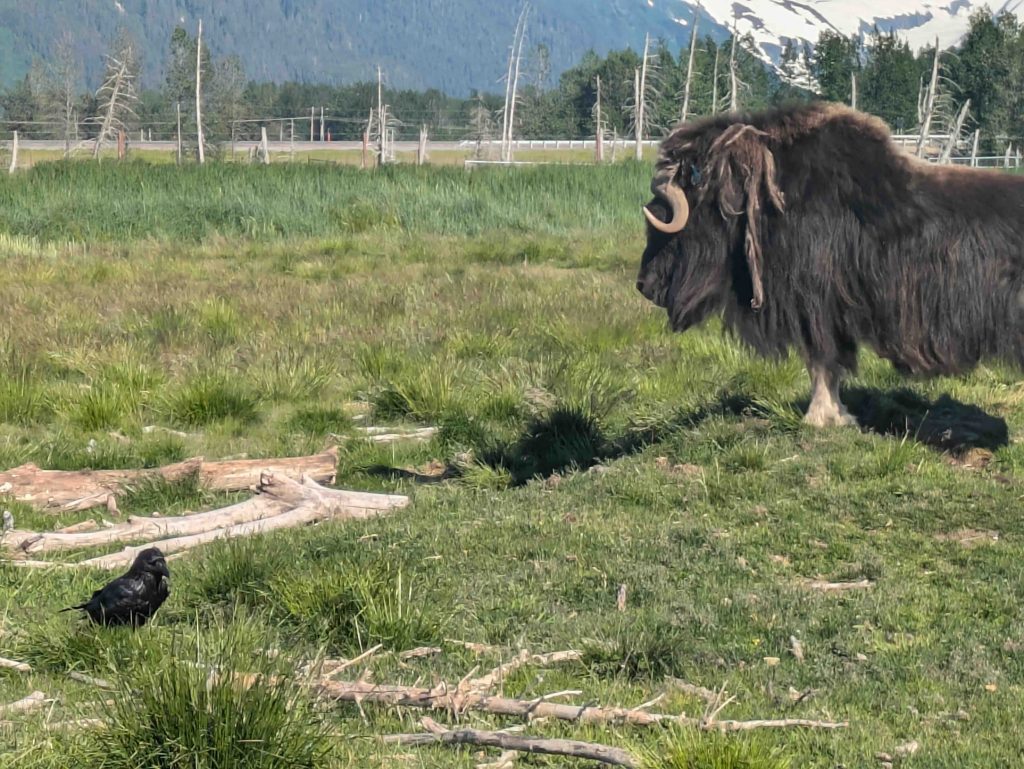
“Let’s check if the bears are there.”
Using the map, we walked towards the bear enclosure; we saw cardboard cutouts of black, brown and white polar bears.
“Even if we don’t see bears, we can take a snap with these life-size bears!”
Black bears are not all black – they can be blonde or cinnamon-coloured too! Grizzly bears are a type of brown bear; brown bears are about 4 times as heavy as black bears. A black bear has its rump as the highest point, while a brown bear has its shoulder hump as the highest part. Polar bears are even heavier than brown bears – and they are carnivores, unlike the other two, which are omnivores.
The saying about brown bears and black bears has a 3rd part to it as well that made sense now – ‘If it’s brown lie down; if it’s black fight back; if it’s white goodnight.’
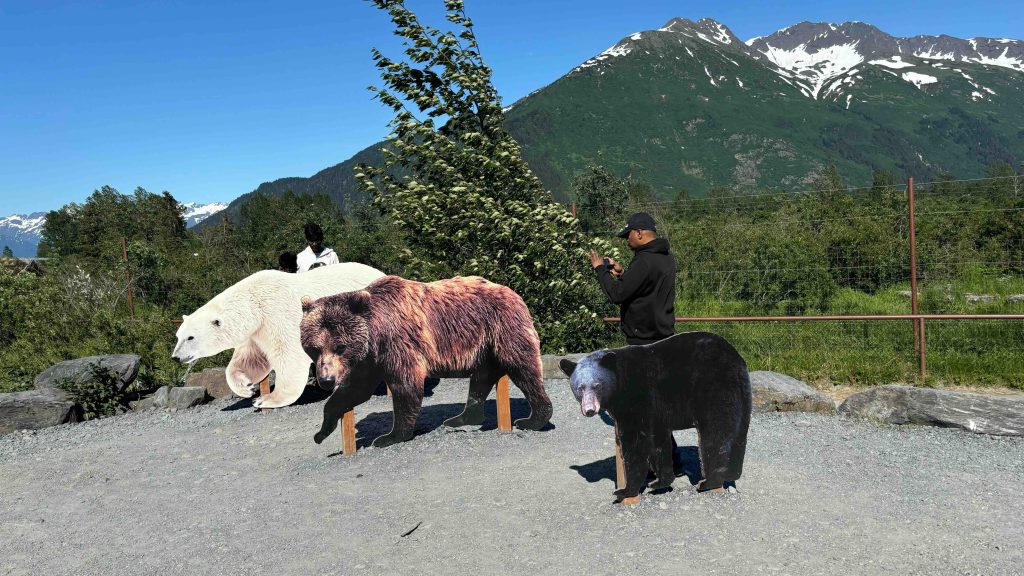
“Some people are there near the fence – maybe the real bears are visible.”
We went closer and saw not 1, not 2, but 3 brown bears in the vicinity. There was a little pond, plenty of grass and trees within the bear enclosure. A couple of them were walking around, and though they were large, they looked cute. One bear caught something in the water (seemed like a salmon), and it began thrashing around the catch ferociously at the edge of the pond – no matter how cute you think they are, beware their power!
Moorthy captured the whole scene on video.
“Two of them are twins – JB and Patron.”
Their story of how they landed in AWCC was a sad one – a mother bear (called a sow) killed a moose calf in some person’s backyard; the person thought the bear might attack his dog and shot the bear with his gun. But her 10-month-old cubs were in a nearby tree. The AWCC took the 2 cubs in since they were orphaned.
“The other one is named Hugo.”
Hugo was also found when she was less than a year old – a couple of folks while snowmobiling discovered her dehydrated, malnourished, and injured due to porcupine quills stuck on her paws. She was not able to walk or eat and was taken in by the AWCC. All 3 bears were now more than 20 years old.
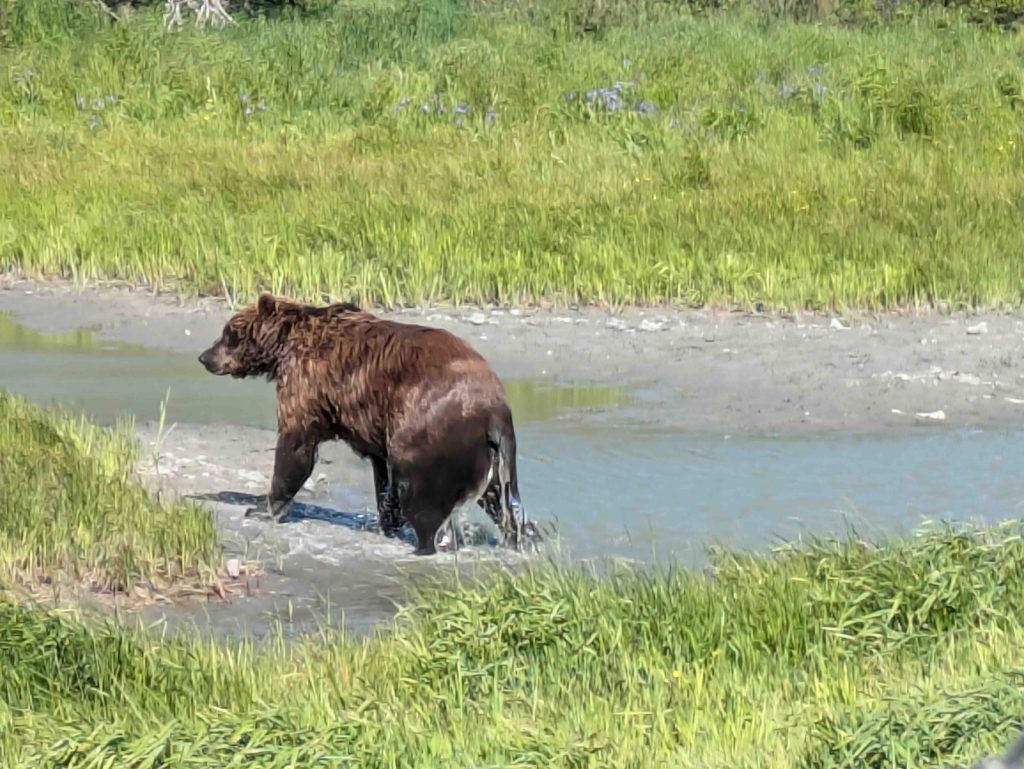
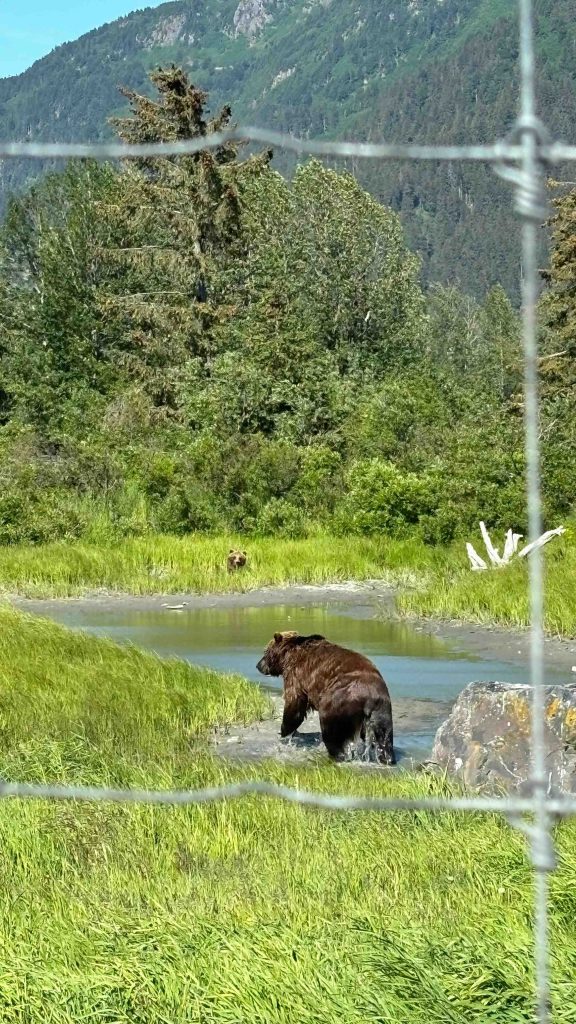

“Your video is good to use in National Geography,” Rakesh said when seeing Moorthy’s footage.
We walked along the perimeter fence till the bears disappeared into the grass and trees. JB weighed around 450 kgs as per a board that read ‘sizing up JB’!
“Mission accomplished – we’ve seen bears in Alaska.”
On the other side, there was a vast area where bisons roamed; a few came to drink water from a large tub near the fence and let visitors have a close look at them.
Raghav and I walked further along the outermost road of the conservatory and ended up on a boardwalk – it was called the ‘Turnagain’ boardwalk, and a board explained that we were seeing the point of confluence – a point where multiple modes of transport converged. The Turnagain arm is a water inlet bordered on both sides by land, and at this specific place, it is bordered on all 3 sides. The term itself comes from Captain Cook – he was the one who explored the Pacific Ocean and when they came down this water inlet from the Pacific, they thought they had discovered a route from the Pacific Ocean to the Atlantic Ocean – but coming further down the inlet they found there was no way out and they had to ‘turn again’ to get out – thus the name ‘Turnagain arm’!
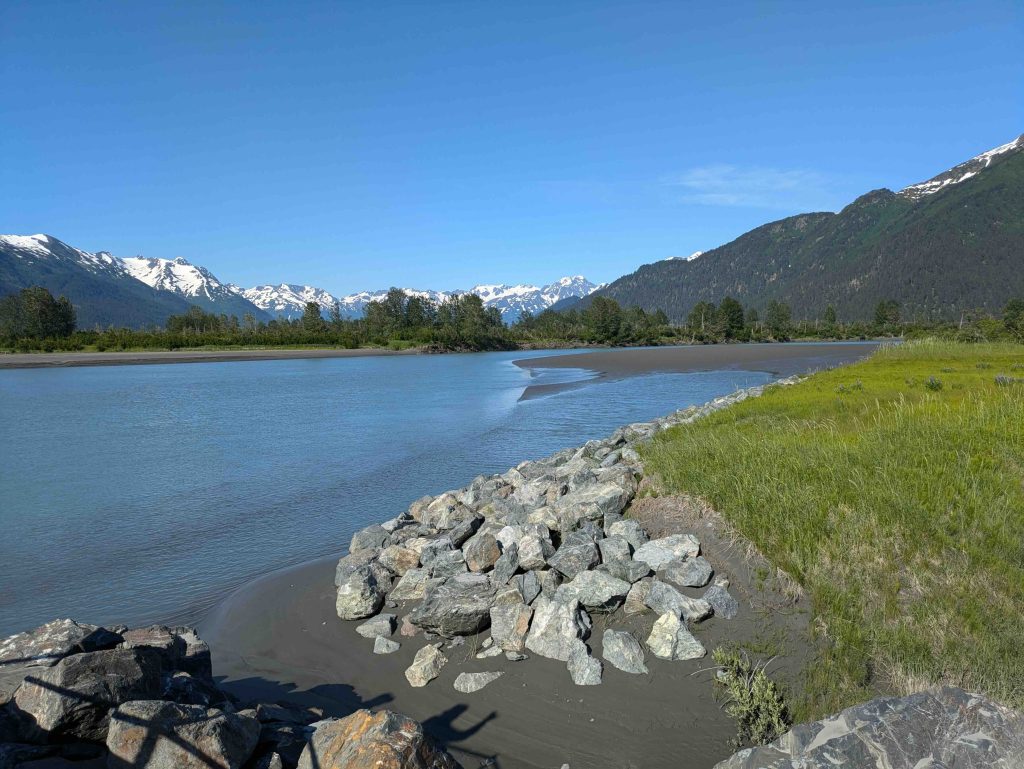
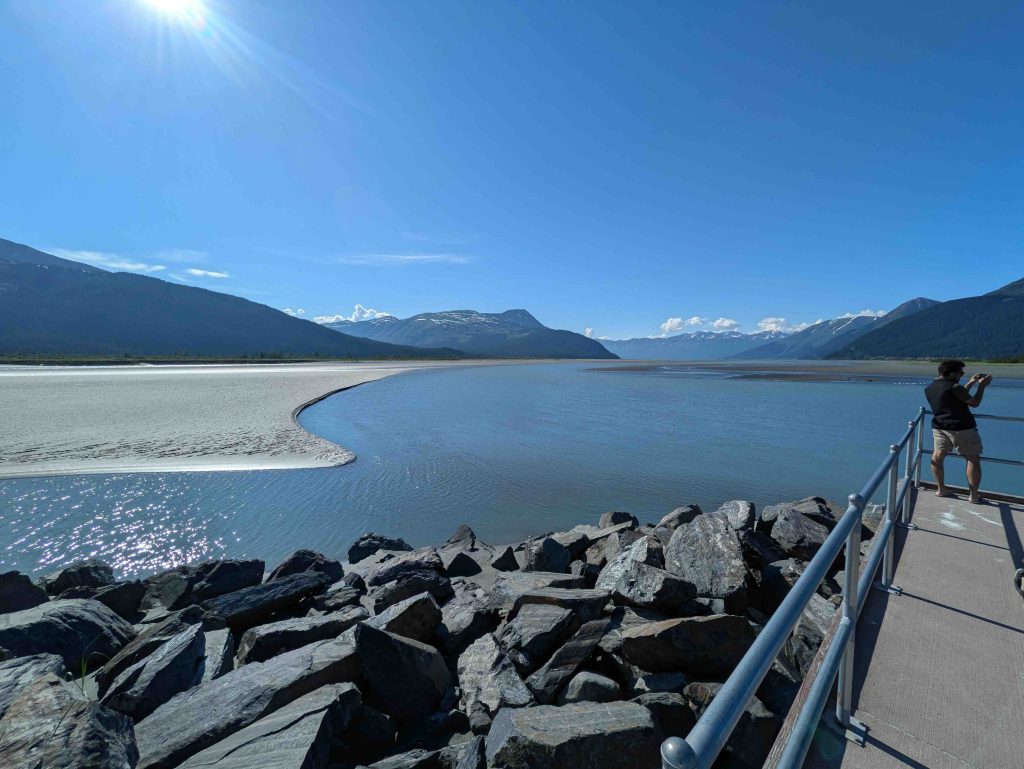
In the 1890s, this was also an area for the gold rush – a person was said to have trekked in the frigid cold to lay claim to the land and establish a gold mine (Crow Creek Mine – it’s a tourist attraction now).
“From the boardwalk, we can see the end of the Turnagain Arm.”
There were a couple of others on the boardwalk – one of them in a wheelchair. After they left, we went to the edge to admire the scenery – a clear day, mountains with snow on one side, greenery on the other side, rocks nearby, and clean water in the middle. And behind us was the farm-like view, with animals roaming about. Picturesque and serene.
Moorthy and Rakesh were driving down the road, and we told them also to check it out. There weren’t many people who came all the way to this side – but it’s definitely worth spending a few minutes here.
We had just under an hour left before the place would close. We still had a few more areas to cover and walked along while Moorthy drove.
“On the other side, there’s a black bear area. Let’s go till there.”
On the way, there was a birds section where we saw a bald eagle – story behind this was that it was shot at and lost its left wing before it was adopted by the conservatory. An interesting piece of history was that in the 1920s, it was legal to hunt eagles in Alaska, and the government even paid 50 cents for each dead eagle – the program was started to help protect salmon. More than 120k eagles were killed at that time. Eagle hunting is no longer legal. Owls and eagles kill prey using their talons (claws).

People gathered around some of the enclosures to try spotting the bird or animal inside.
We then saw the coyote and the wolves.
“The black bear area is supposed to be between these two.”
“Yeah, that’s what the map says. But there’s nothing here.”
We were running out of time as well – down to the last 30 minutes. We went along the path as per the map a couple of times but didn’t find any signs of a bear enclosure.
“Let’s ask a staff.” We spotted one, and he said, “It’s near the gift shop.”
We headed again towards the same side from which we had come. “But we covered this area fully.”
“Yeah. Surely not here.”
Near the gift shop, there was an eatery as well – a grab-and-go place – I paused for a moment when I saw their menu that was displayed outside. One of the items was “reindeer polish” – that’s reindeer sausage. The irony was that just nearby was the reindeer enclosure!
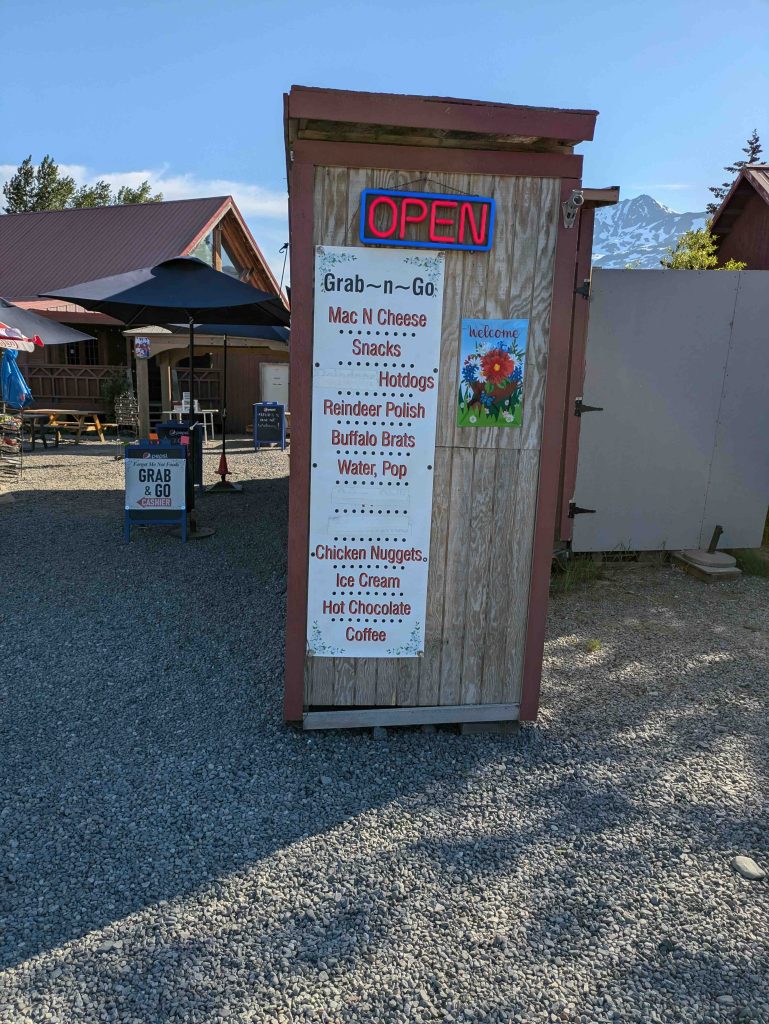
Down to 20 minutes before closure. The map said that there was another black bear enclosure near the brown bear area too.
“Let’s check out that one.”
We hopped into the car to save time. I did want to see the other bears before leaving, but they were not to be seen. There is a boardwalk that runs along the top of the bear enclosure – it gives you a top-down view of some of the places.
“Man, not even one to be seen.”
“We were lucky we saw them when we entered.”
No sign of any movement either.
“But there are some areas that we can’t see – they must have gone in there.”
Back down below to the original spot where we saw the bears, we saw a couple of ravens (like crows but bigger) eating fish near the pond – this is apparently common, after the larger predator has finished eating, the smaller ones scavenge for any scraps left behind. This must have been the salmon the bear ate earlier.
“Let’s go to the bathroom and leave.”
The bathroom here was called the ‘bears bathroom’.
“Maybe we’ll see the bear in the bathroom!”
But the place was empty.
“We should make a sorry face with the staff and hope that they feel pity and take us to show the bear.”
As we came out, we saw a lady staff member in a conservatory vehicle.
“Is there a black bear?”
“Yes. There’s a juvenile. In fact, I saw the bear while driving down now.”
It was 7 pm – closing time. But the staff told us where it was. “I’ll be going back down that side. You can follow me.”
We followed her, and she showed the enclosure – looking at the map, this was called the ‘rotating carnivore habitat’. I guess they used it for different animals during the year! As we walked towards it, another staff member said that it was closing time and we should leave.
“We’ll just see the bear and leave.”
Another family near the enclosure spotted the animal. The bear had stepped outside its wooden cave while two ravens were watching it.
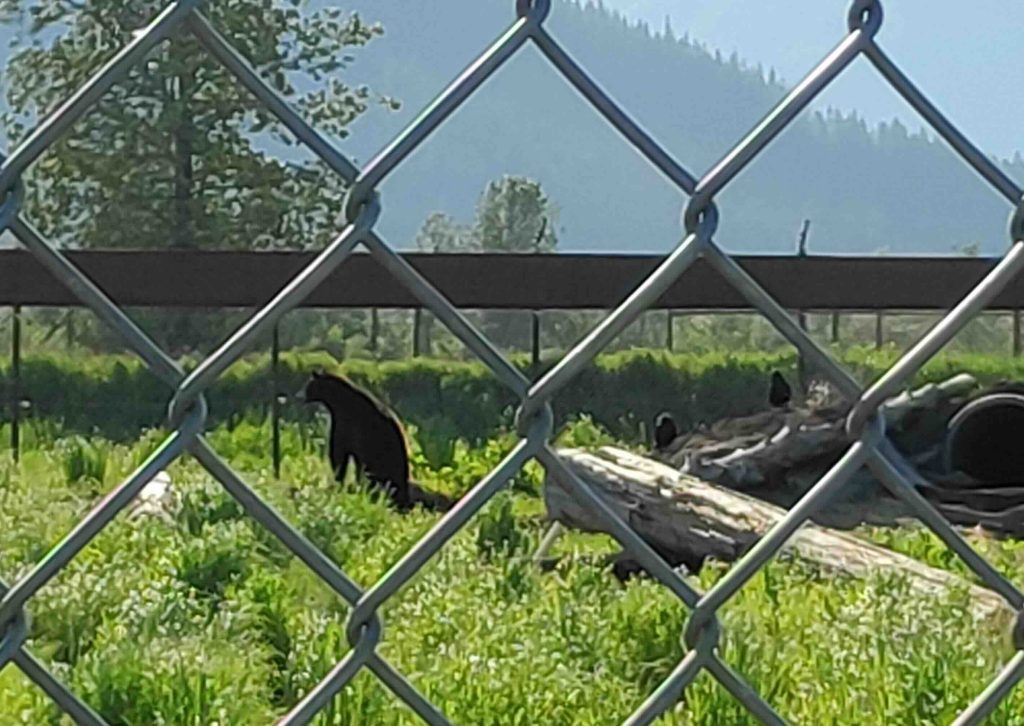
It was 5 minutes past closing time, and the staff came again asking us to leave. We were literally the last group to leave!
A nice set of audio guides for the place: https://alaskawildlife.org/visit/audio-guide/
